Gigabyte Z790 AORUS MASTER X : Flawed design?
Key Features
- Price: $499 (USD)
- Release Date : 22nd October 2023
- ATX Form Factor / 8 PCB layers + 2 Ozz copper layers
- Intel Z790 chipset
- LGA 1700 CPU socket
- CPU Support
- 12th Intel Core CPU
- 13th Intel Core CPU
- 14th Intel Core CPU
- 4x 48GB 8,266 MHz DDR5, maximum 192 GB
- 3x PCIe x16 ( 1x PCIe 5.0*16, 1x PCIe 3.0*4, 1x PCIe 3.0*1 )
- Back IO :
- HDMI 2.1
- DP 1.4
- 4x USB 3.1 RX/TX 5 Gbps
- 2x USB 3.2 2nd gen. Type-A + TYPE-C RX/TX 10 Gbps
- 2x USB 3.2 2nd Gen 2×2 Type-C RX/TX 20 Gbps
- 1x USB 3.2 2nd Gen Type-C RX/TX 5 Gbps
- Surge protected 10Gbs LAN controller
- WiFi 7 / BT 5.3
- Realtek ALC 1220-VB Codec 7.1 channels audio,
- STORAGE
- x5 M.2 SSD (x1 PCIe 5.0*4 || x4 PCIe 4.0*4)
- x4 SATA 3 — RX/TX 6 Gbps
- Excellent VRM
- Excellent cooling components
- Back plate
- No DUAL GPU Support
- PSP placed below M.2 SSD connectors
- Not enough differences with its Z790 AORUS MASTER twin to motivate a $100 premium
AORUS is GIGABYTE’s more premium/gaming focused product and the MASTER where serious premium usually takes place.
The X line up is the AORUS refresh family of boards Gigabyte has released to accommodate the new 14th Gen of Intel CORE processors. And it does show-off some features which were believed to be reserved for the next generation of boards. So, exciting stuff indeed.
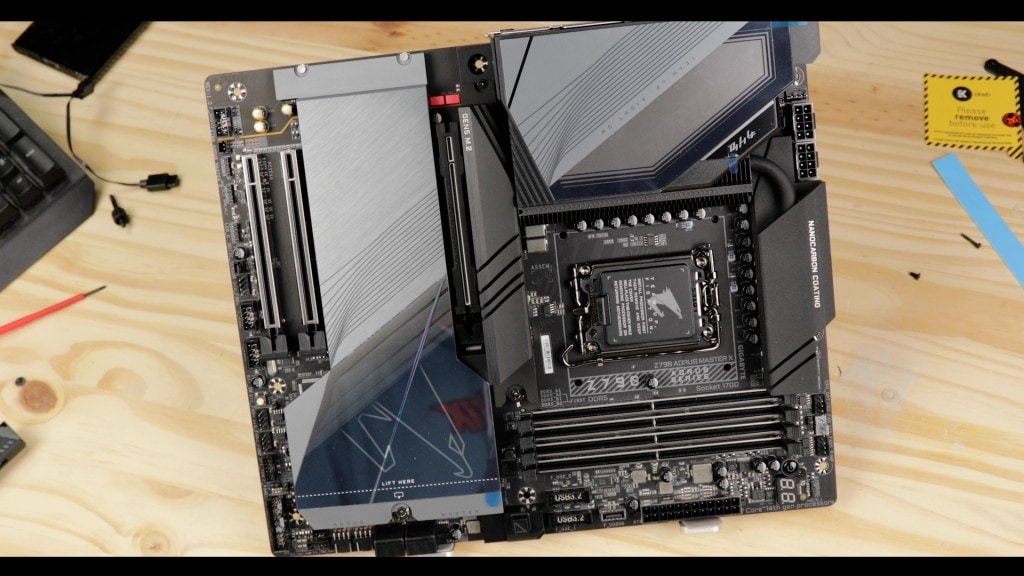
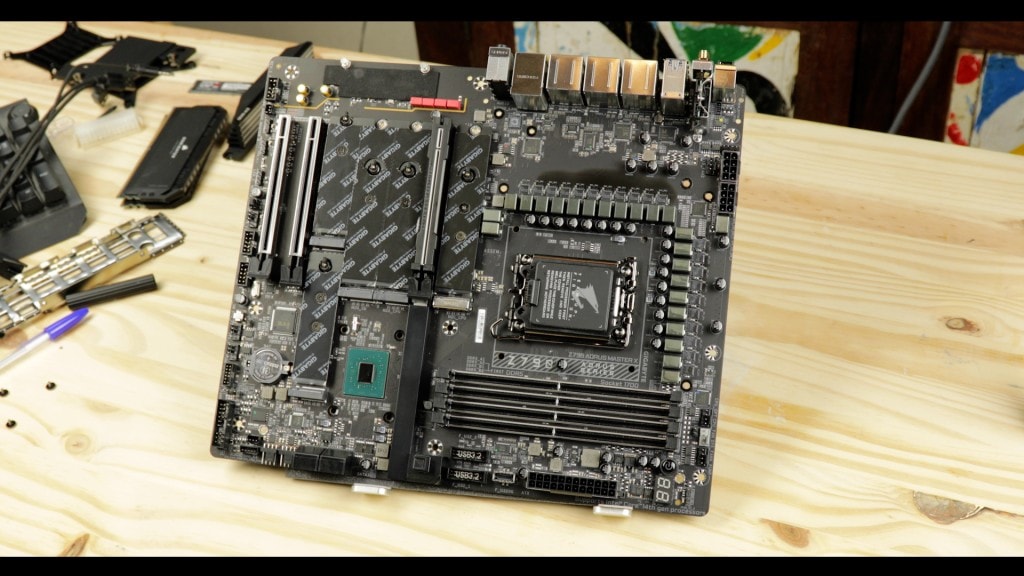
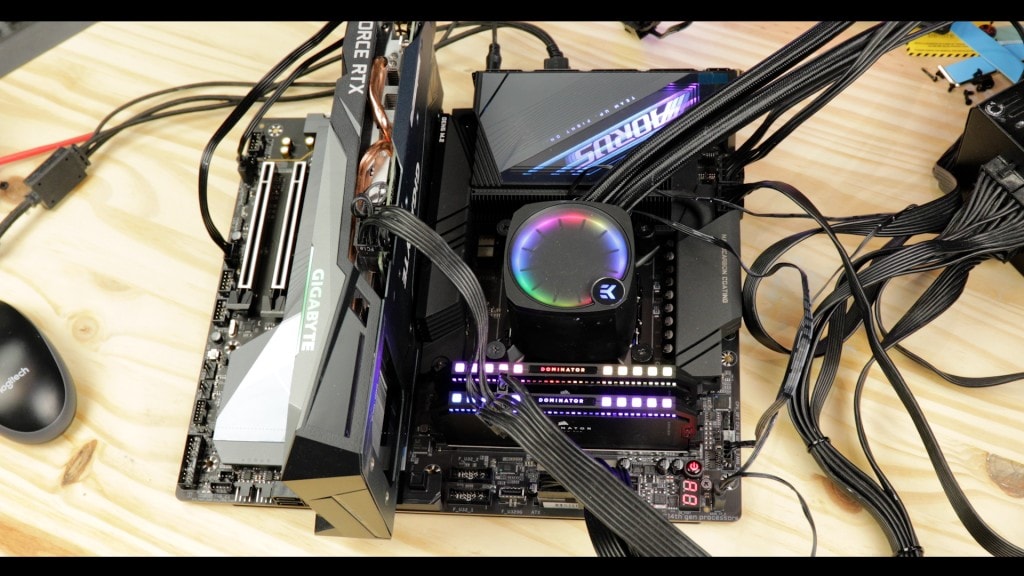
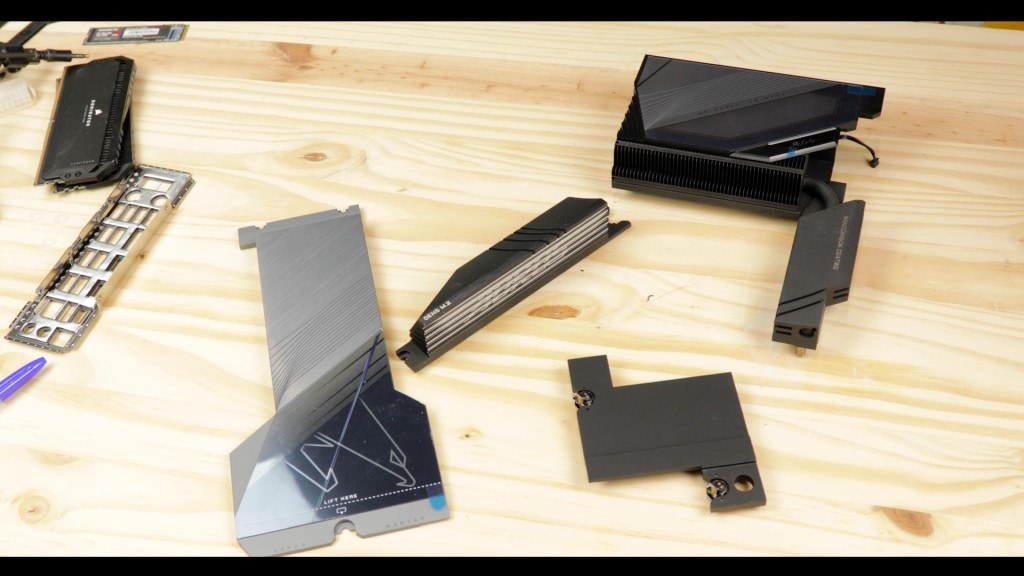
PCB

- Heat dissipation
- Signal interferences and hence system stability
- And the overall motherboard lifespan.
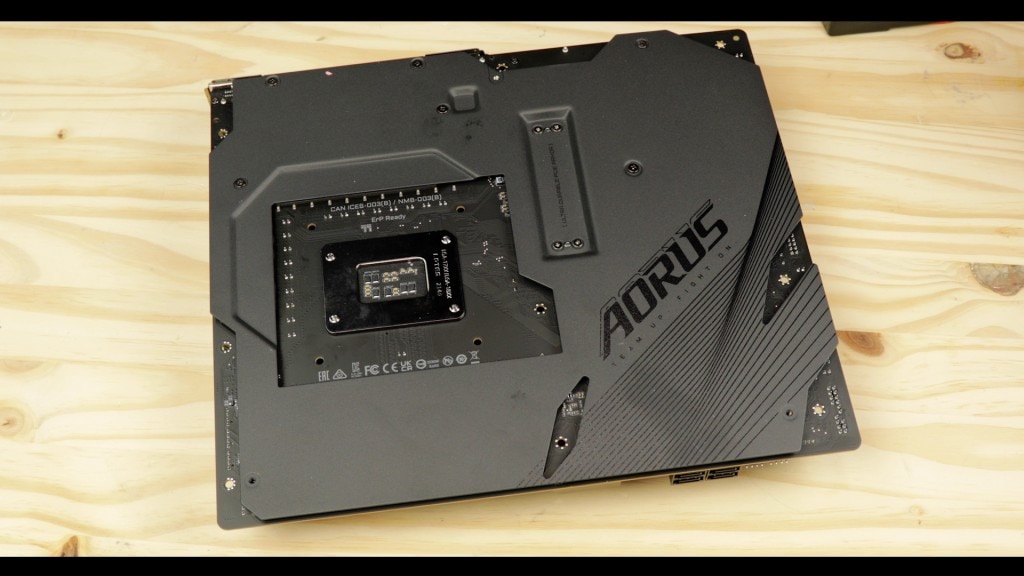
In addition we do have a rather premium back plate protecting our circuitry and adding to the board robustness.
Clearly we are beyond fundamentals. In terms of solidity and longevity we are in the presence of a luxurious piece of tronics.
LGA 1700
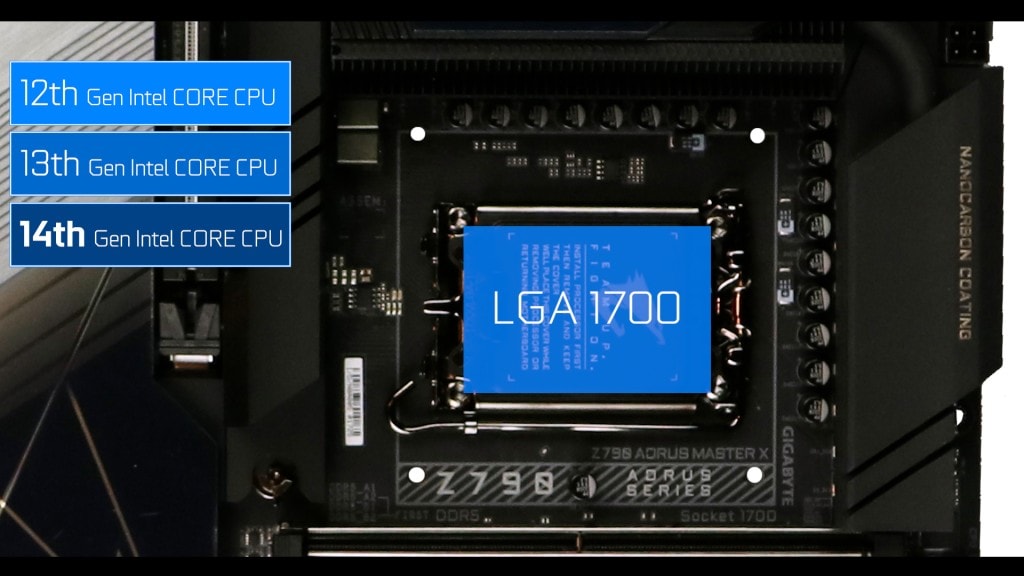
Our LGA1700 socket can support :
- 12th Gen Intel CORE CPU
- 13th Gen Intel CORE CPU
- 14th Gen Intel CORE CPU
As CPU socket goes, we have our usual LGA 1700 Foxconn ILM, which allowed the introduction of both PCIe 5.0 and DDR 5 standards, and on this board, officially supports the brand new 14th Gen of Intel Core processors!
For the first time in a very long time (if not ever), Intel has a CPU socket which did support 3 consecutive generations of processors, which I hope is a trend we will keep seeing on future generations of motherboards!
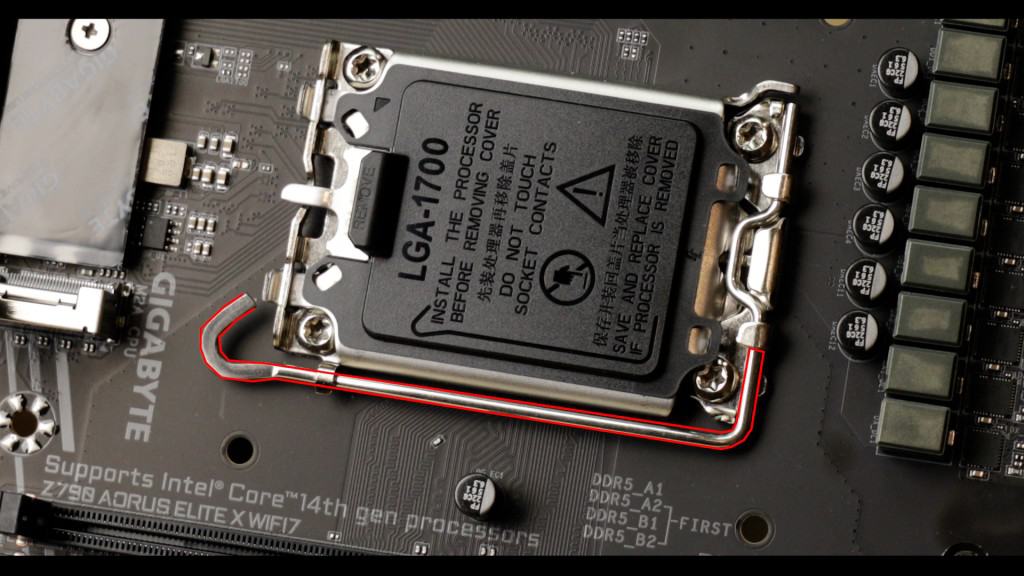
Little kudos to FOXCONN for finally trying to improve the CPU locking mechanism and featuring a longer and better locking lever.
VRM
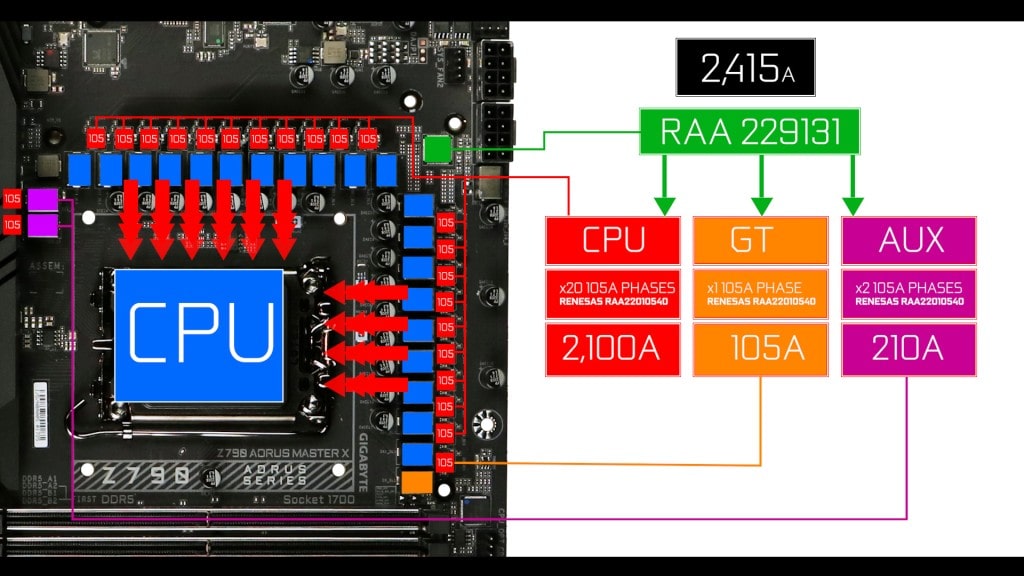
- CPU : x20 105 AMPS RENESAS RAA22010540 power phases organized in a 8 parallel phase configuration
- VCCAUX: x2 105 AMPS RENESAS RAA22010540 power phases
- VCCGT: x1 105 AMPS RENESAS RAA22010540 power phase
- VRM CONTROLLER : RAA 229130
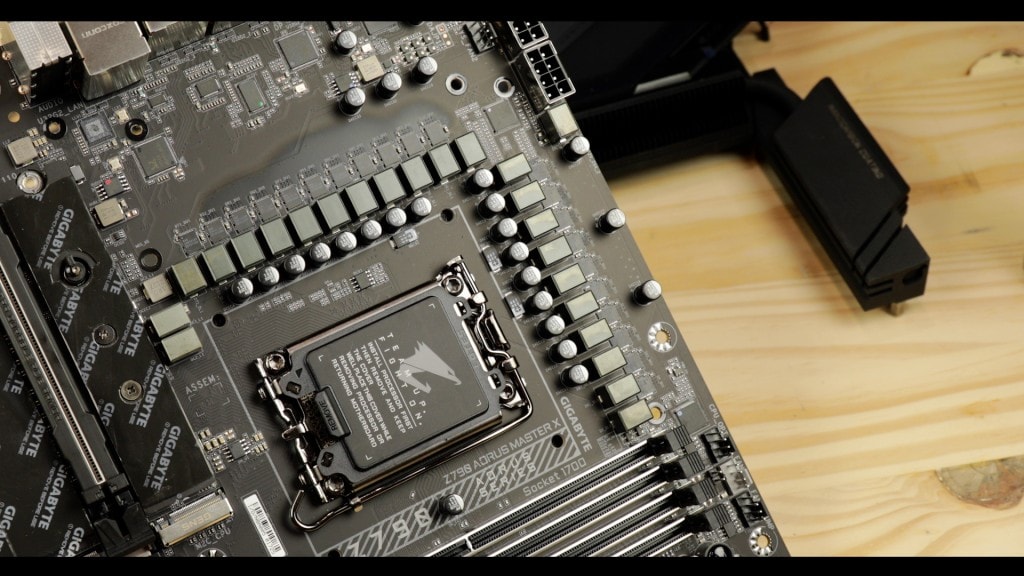

We have a very near identical power solution than see on its Z790 AORUS MASTER predecessor, meaning an imposing 23 105 AMPS direct phases solution organized in a 20 + 2 +1 configuration.
That’s 2,100 of CPU CENTRIC AMPS here to impregnate your CPU with severe overclocking juice. And I need to say, there is nothing Intel will ever produce which will shame this power delivery. I love the 105 amps PSPs. I mean this is the very top of what the industry can produce today. I love the fact that we have 210 amps almost dedicated to RAM clocking. All that is beyond fancy.
What I love less, and Gigabyte should really listen to this next part, is 2 have power stages placed and hidden under what could be the hottest sensitive components in our board, the CPU connected, PCIE 5 enable M.2 SSD thermal floor padding.
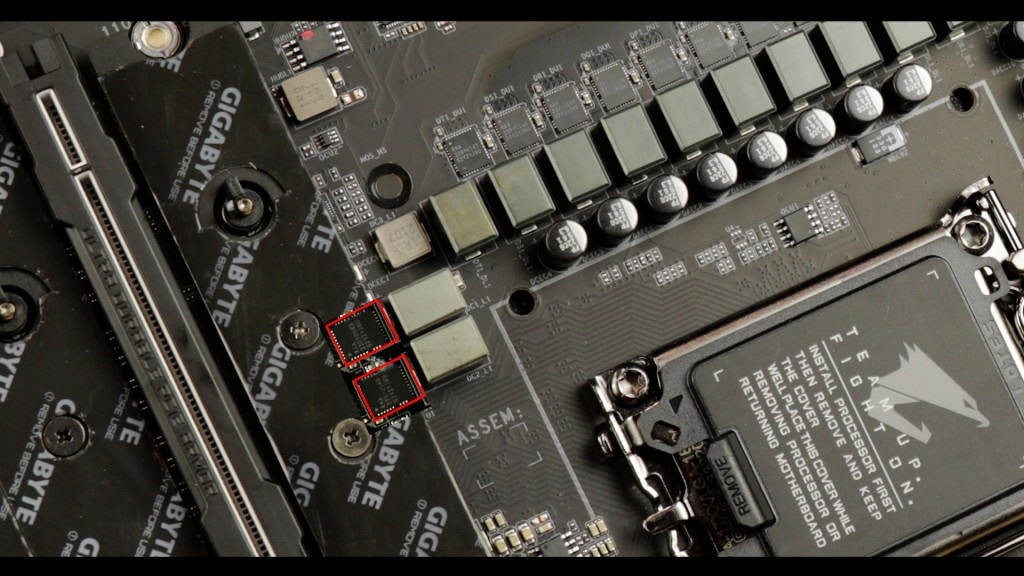
Power stages can get hot, and even though there are only 2 of them, and there is a metallic plate between the M.2 SSD floor padding and the PSPs, even though in this case there is not much thermal bleeding if at all, I do not like this evolution and really encourage Gigabyte not to continue in this direction.
I’d rather have less power stages than having a potential design habit which could evolve into a real thermal flaw.
VRM Cooling
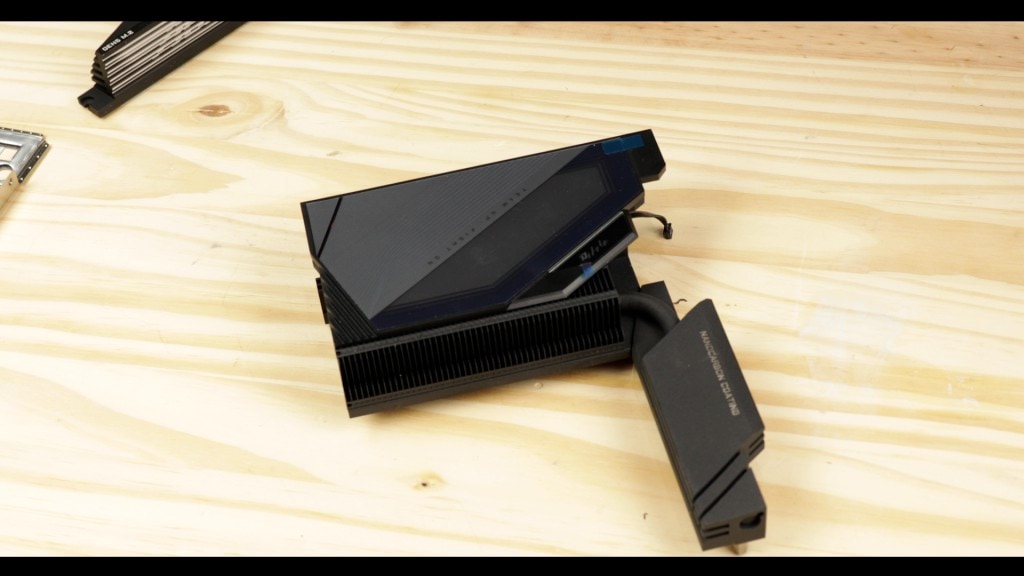
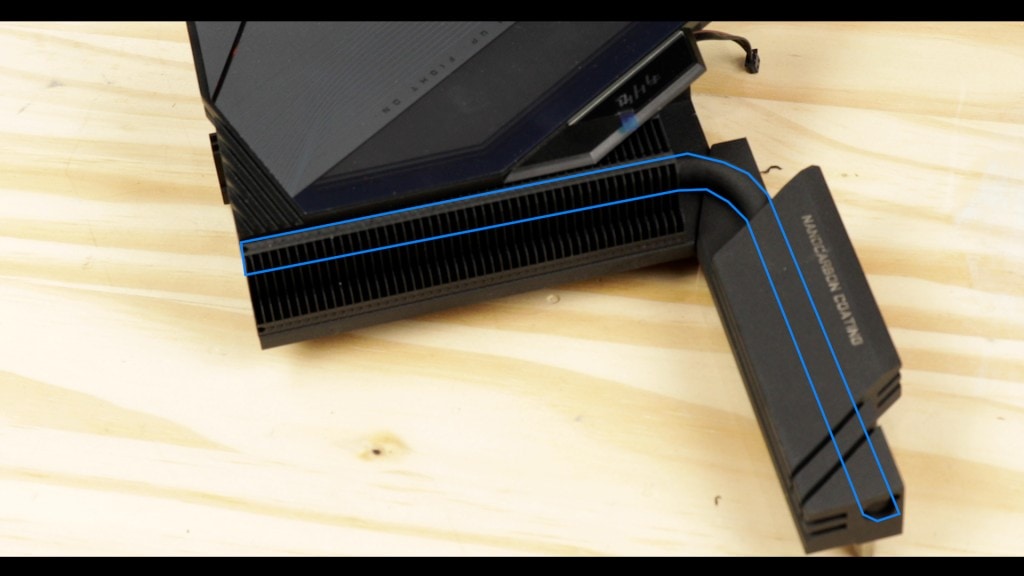
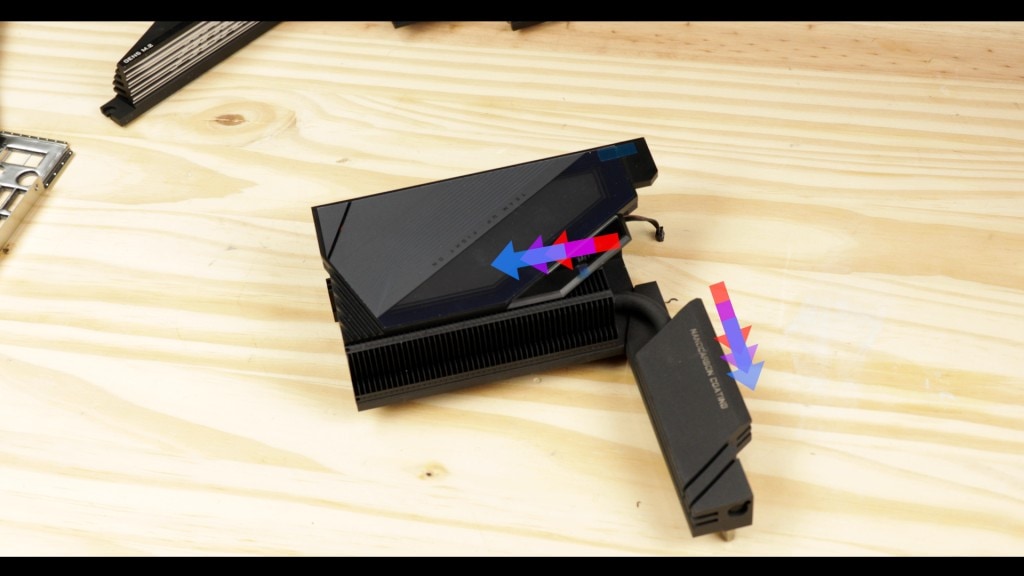
VRM MAIN COOLING BLOCK
The main one is this rare fin-array bock topped by a massive extended plate. Having a fin array cooling solution is more expensive solution, only Gigabyte has been using on their more premium boards.
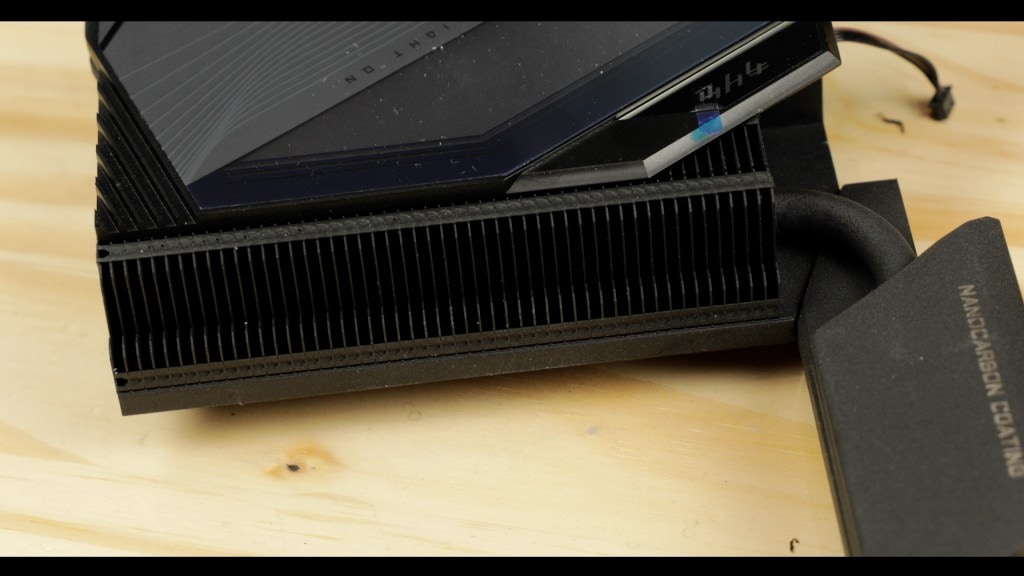
It provides an obscene amount of radiating area and have a much higher heat dissipating ratio than heat blocks. Absolutely delighted to see it here.
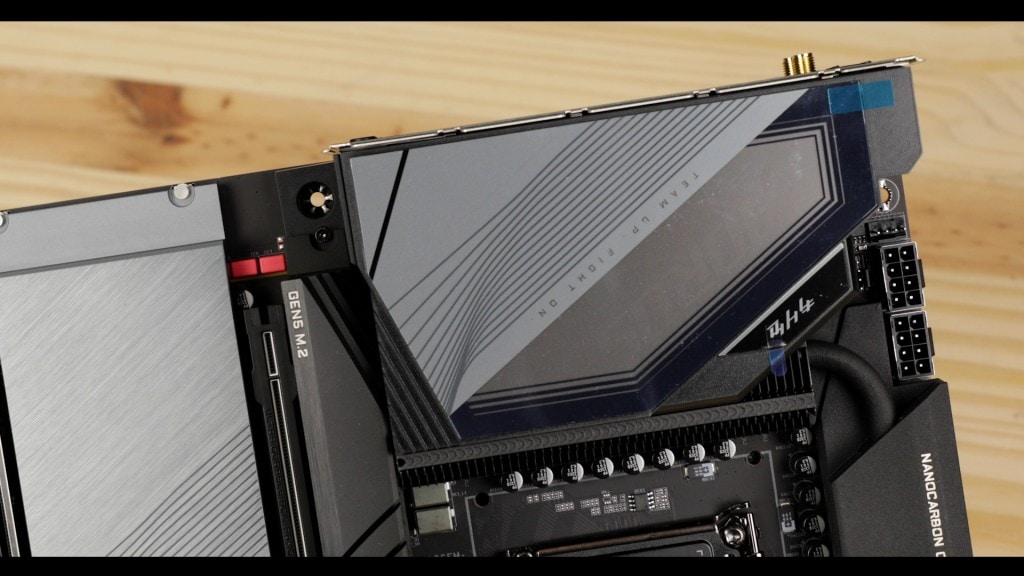
VRM SIDE COOLING BLOCK
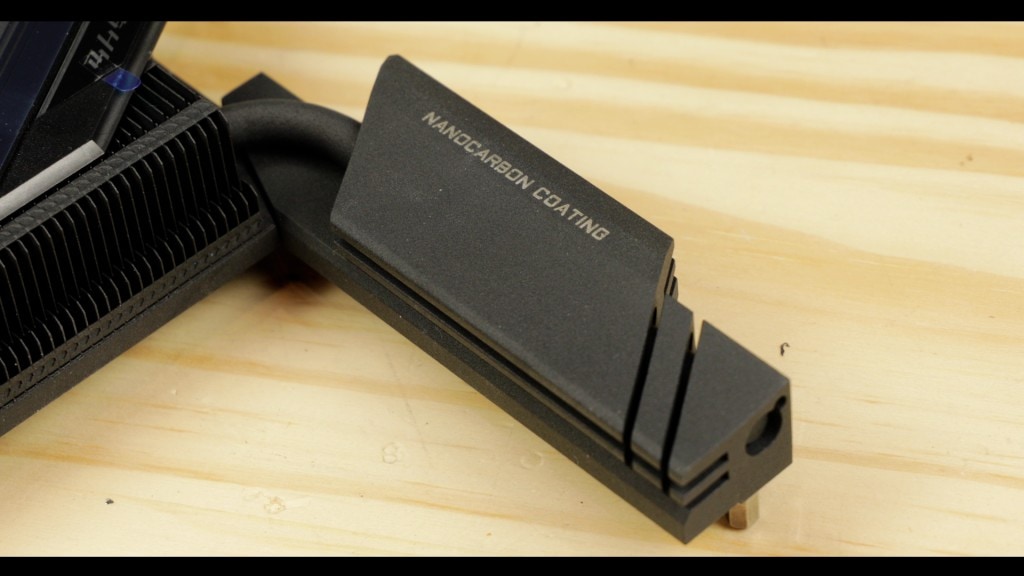
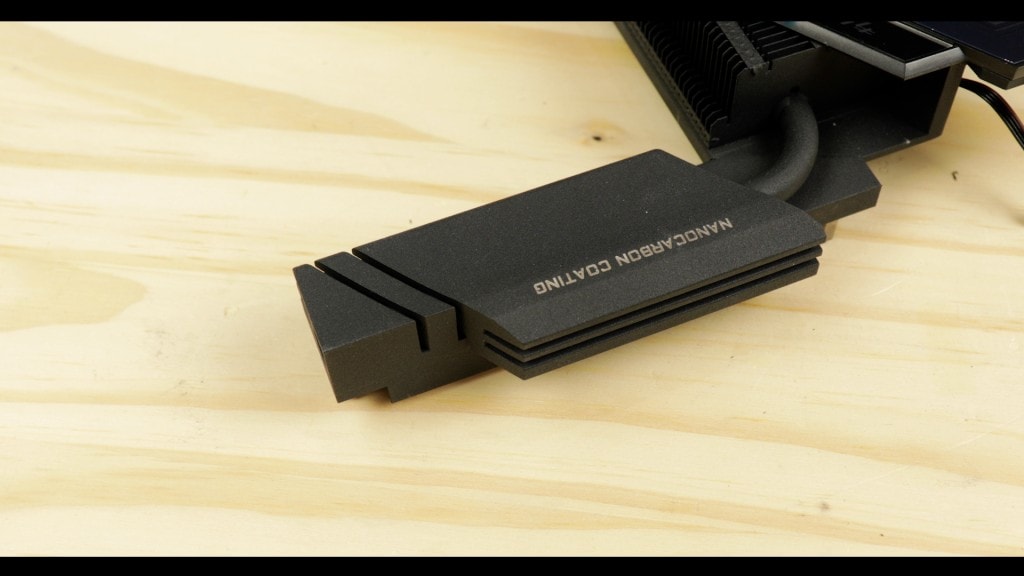
The side block is a no less impressive aluminum block, with radiating winglets protonating on both of its sides,
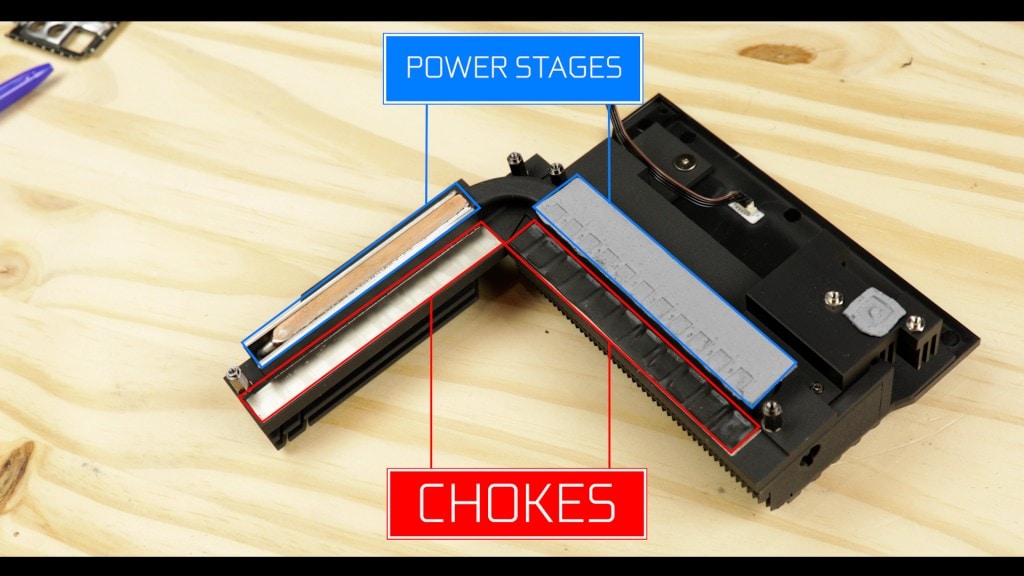
It also feature a double contact design, providing an intimate thermal pad heat relief to both PSPs and chokes.
I do want to note the thick thermos pads sandwiched between the back PCB and the back plate, which are here to provide an additional heat relief on the PSP solder points. Rare and premium feature indeed.
An absolute master class in terms of VRM cooling design! It does an absolute gorgeous job at keeping this army of 105 amps power stages!
VRM TEMPS
And results are naturally good!
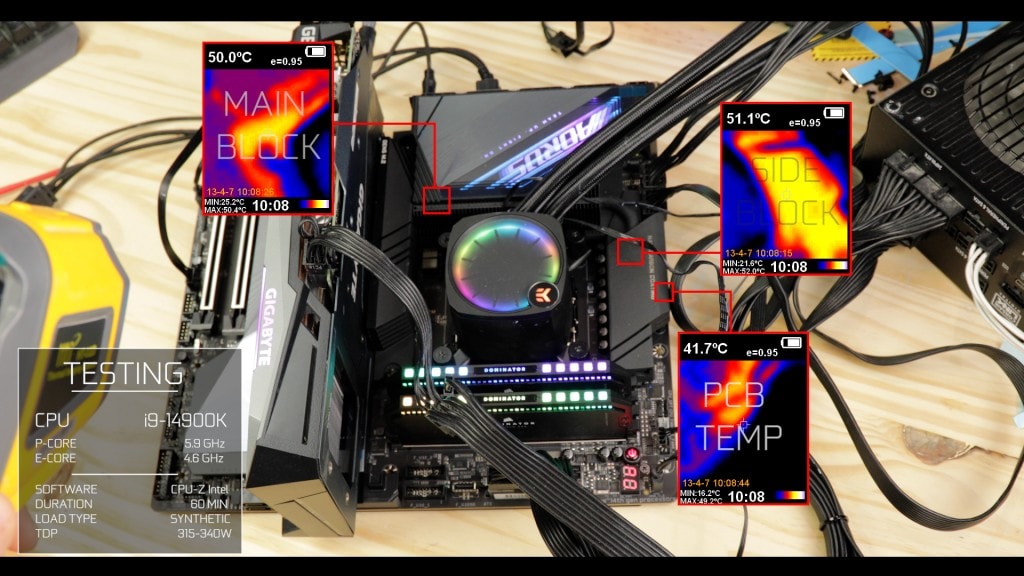
With an i9-14900K continuously running at 5.9 GHz for a full hour, both block stay nicely close to the 50c symbolic bar, which again, coming from 20+ 105 amps PSPs and an extravagantly demanding processor, it is extremely impressive.
Overall, I am giving the MASTER X VRM a 8 out of 10 score. I was going to give it 9 but im deducting design point for adding power stages below the CPU linked M.2 SSD. It is hard to know what that will entail on the long run, and I just find this move a poor precedent.
Obviously, I do not expect this board to be coupled with anything less than an K class, i7 or i9 CPUs, anything less would be a waist of money.
RAM
The MASTER X supports 192 GB of DDR5 RAM organized in a dual channel configuration, “clockable” upto a not very realistic 8,266 MHz.
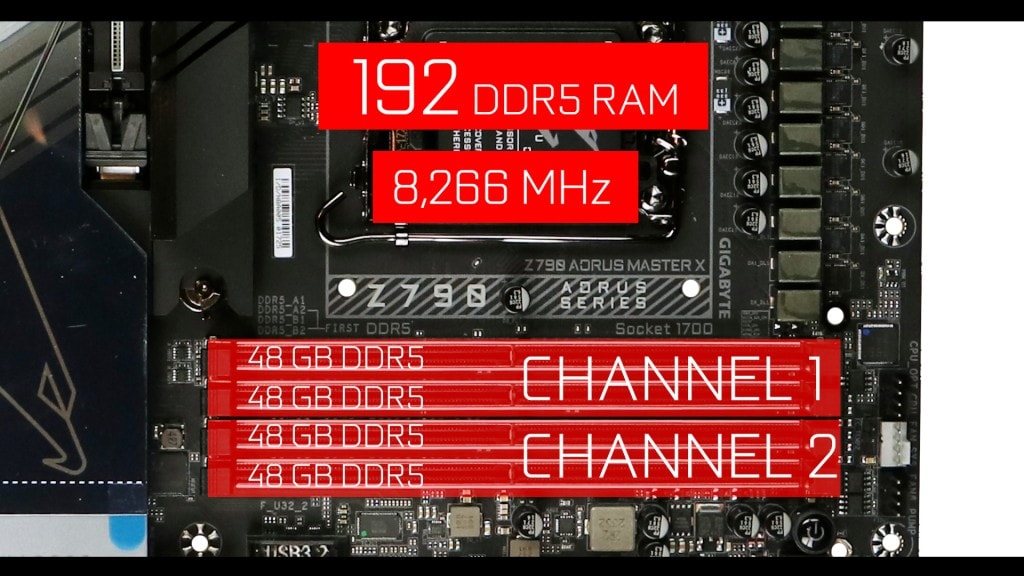
By design actual boards cannot achieve anything beyond 6.5 GHz on a fully populated dual channel. You will have much more chances to get around the 7 / 8 GHz upper limits with a single stick configuration.
Anyhow, you will need to show some patience since there are very few sticks able to reach these kind of speeds currently.
For the rest, the board does provide some solid RAM futureproofing.
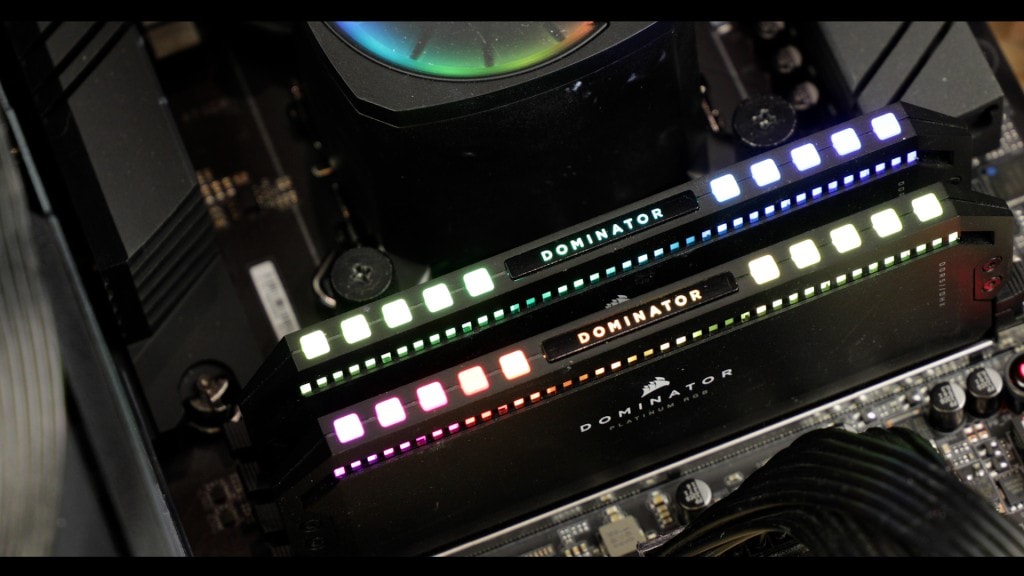
M.2 SSD
Our board shows-off 5 M.2 SSD connectors,
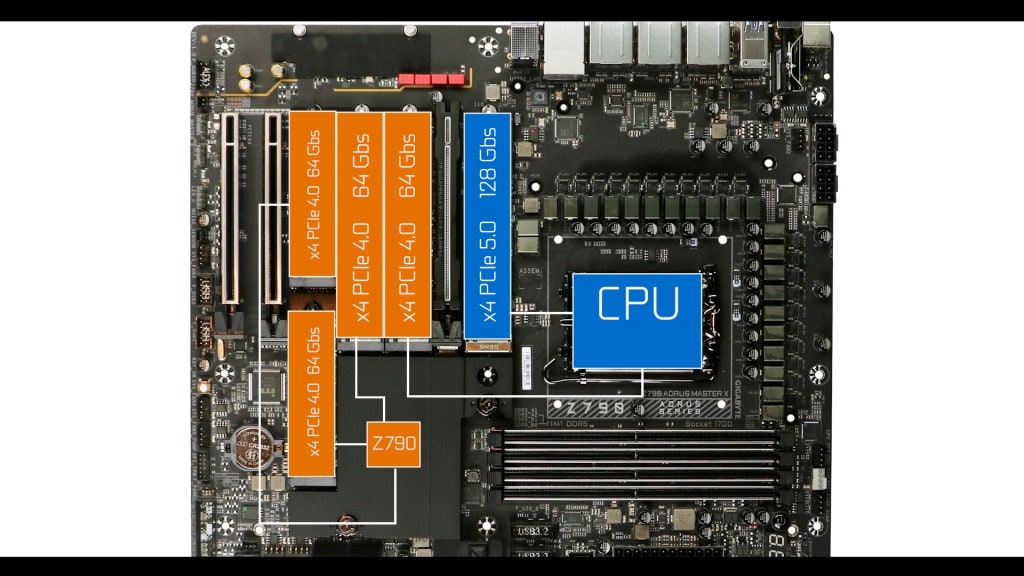
Only the closest one to the CPU is PCIe 5.0 enabled and can potentially peaks at a blazing fast 128 Gbs, and precisely why it has received the bulk of the cooling focus here, and for good reasons.

On top of dealing with a notoriously hot component, ( PCIe 5 enabled sticks ), the cooling system has to account for the additional heat bleeding the 2 VRM POWER stages gigabyte hid under the connector.
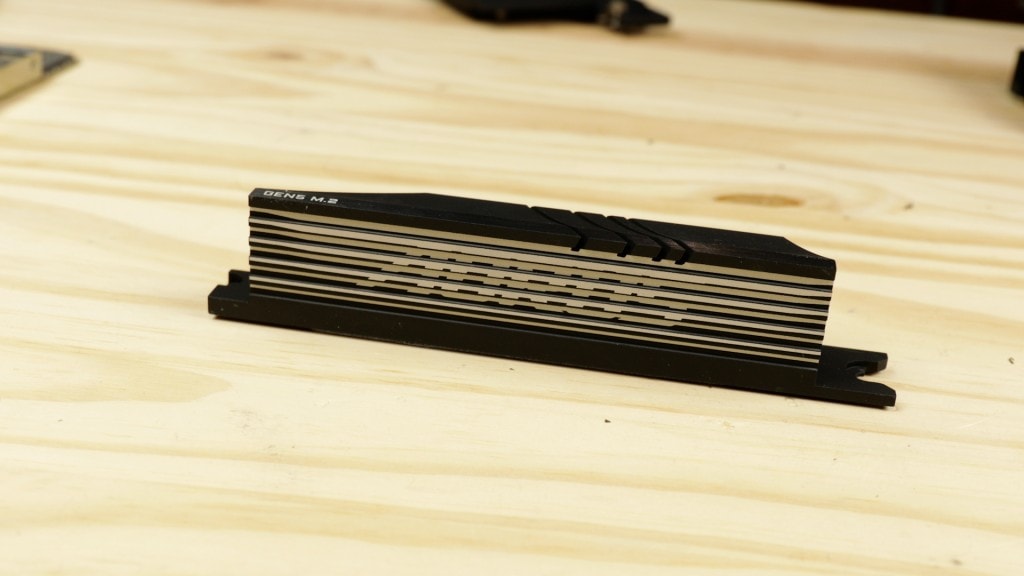
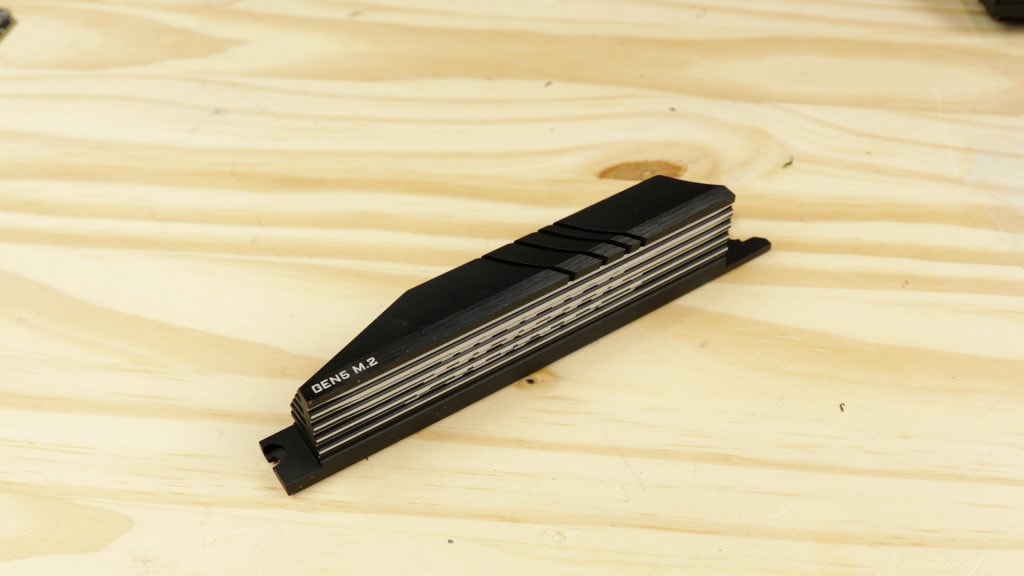
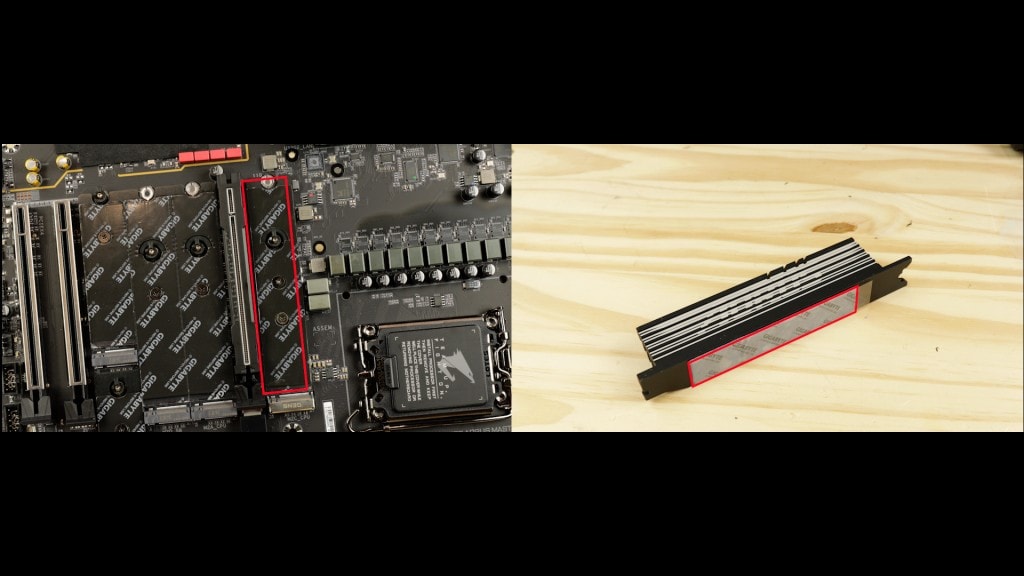
Result is a massive, and I don’t think I have ever seen one that big! In addition it does benefit from a dual thermal pad treatment, which all work rather well at keeping the stick cool at all time.
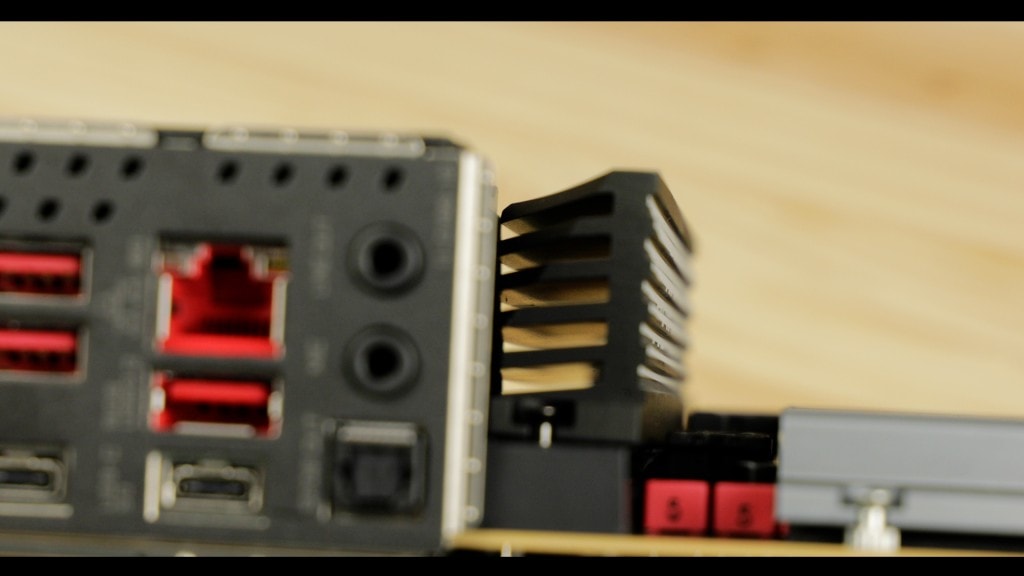
It is about 3cm high and features a 5 level winglet structure to dissipate more heat than a 4 lanes PCIe 5.0 M.2 stick would ever produce. A little over the top in my opinion (pun intended).
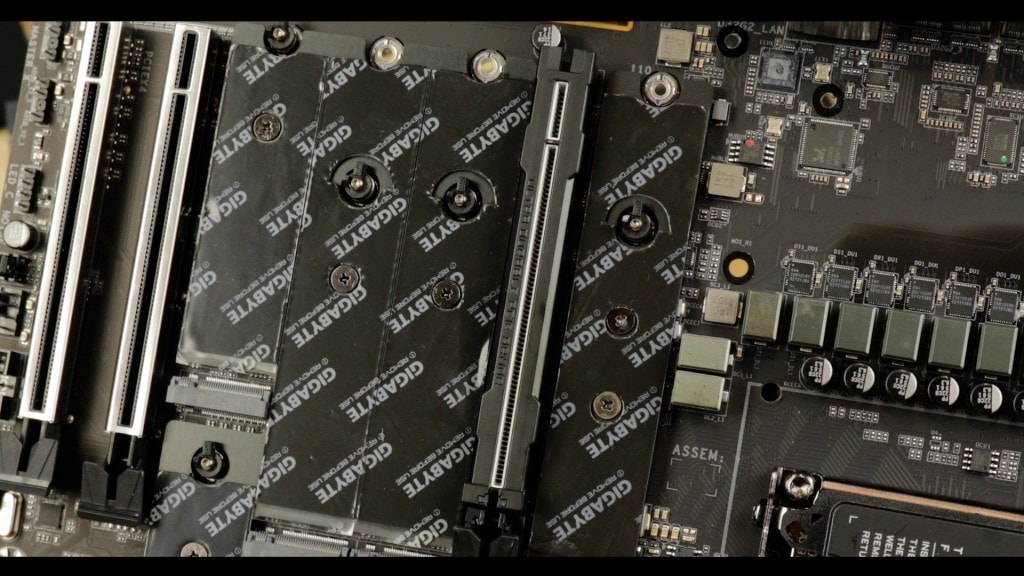
The 4 other connectors are all running at 4 lanes at PCIe 4.0 standard which is plenty fast and plenty hot as well.
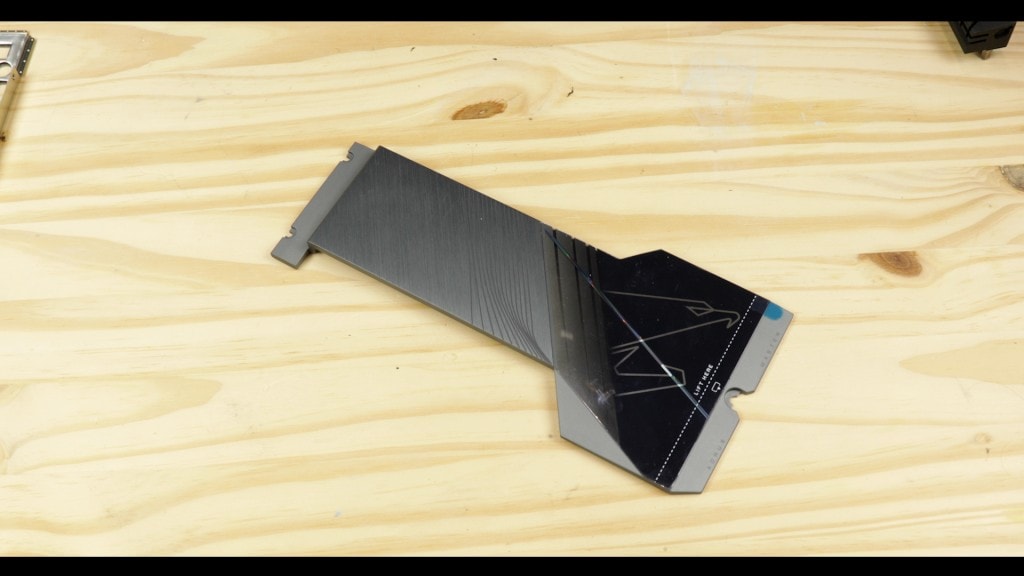
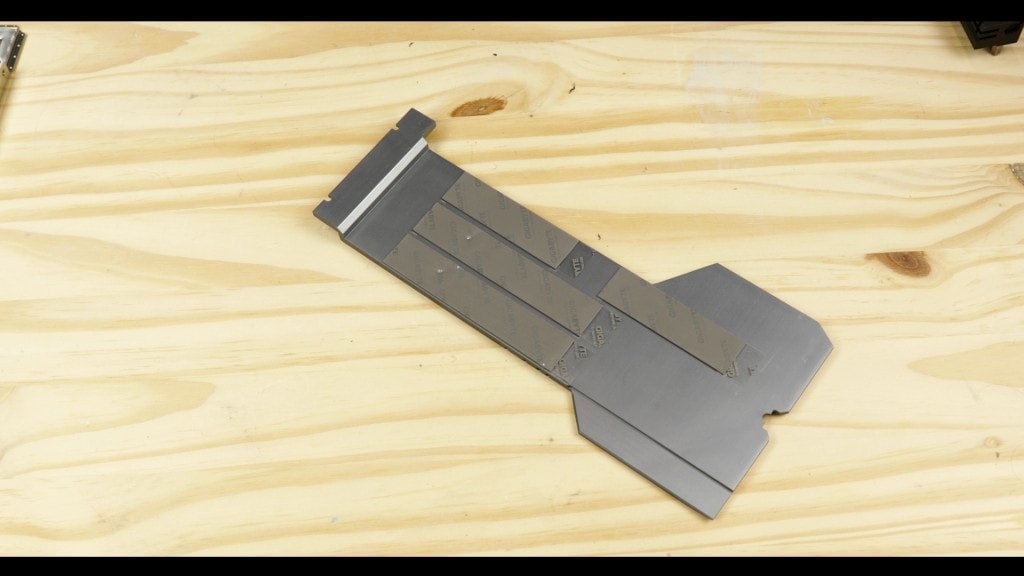
Luckily they also all benefit from a double thermal pads and are cooled by a single, large and thick single heat plate.

Worth noting, all of our m.2 SSDS do come with a screwless locking latch, which, in my opinion, has become the most sturdy, and easy to use , in the industry today
Obviously coming from a Z790 powered board, and the limited amount of PCIe 5 lanes available here, we do have the same PCie Bifurcation scheme we have seen on the PRO X,
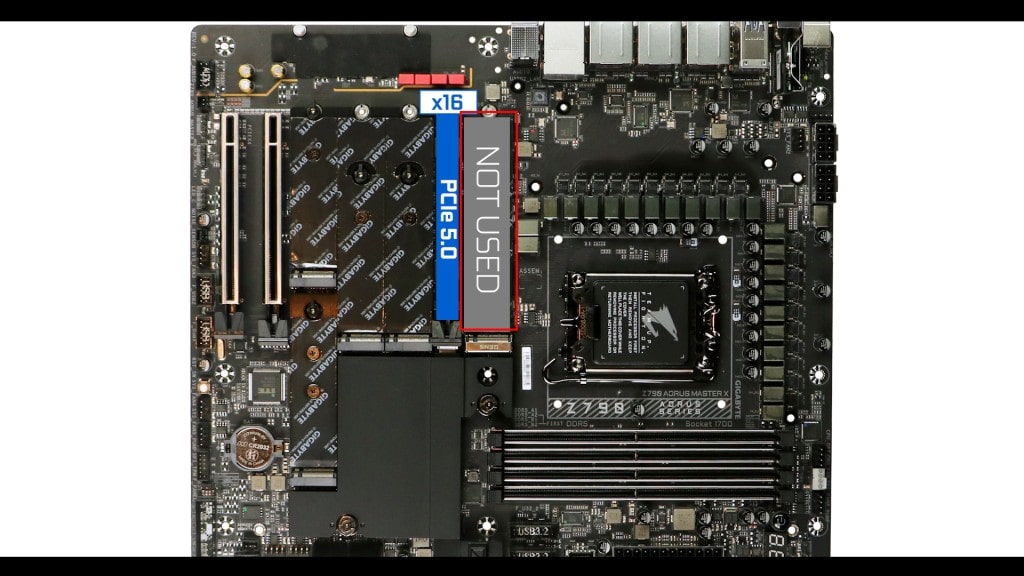
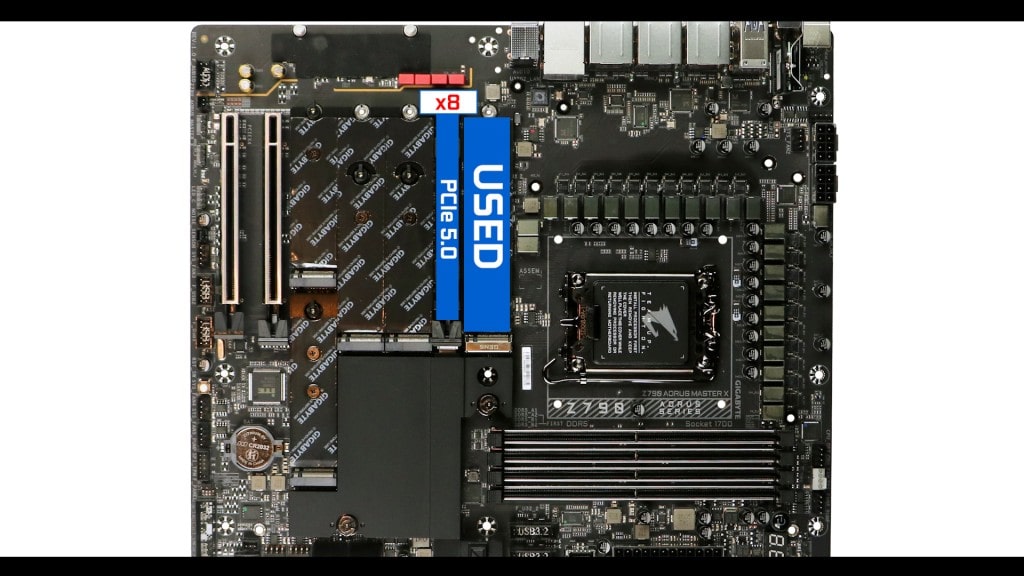
Meaning that if you do dare to use the PCie 5.0 enabled connector, the GPU Expansion slot will see its bandwidth divided by two, which is the price to pay to use a PCIe 5 enabled stick on a Z790 powered board in general.
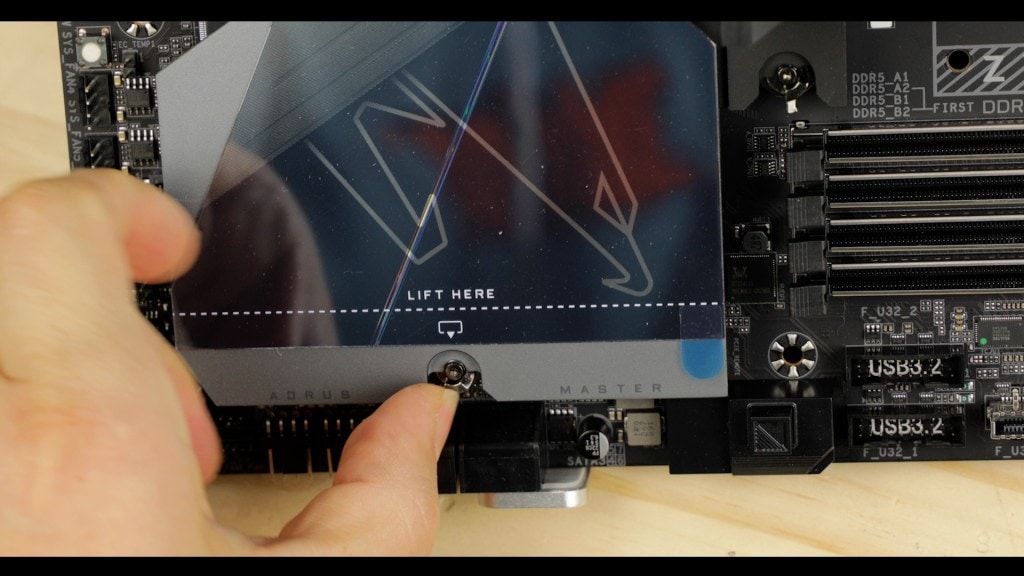
Finally, and to end this section on a positive note, we have the screwless plate locking mechanism introduced on the X refresh line up, which is a sizeable innovation and which I totally fell in love with !
Chipset
Our board is powered by Intel’s now aging Z790 chipset, which still runs on a low 6 Watts, allowing it to keep cool even with a somewhat reduced heat shield.
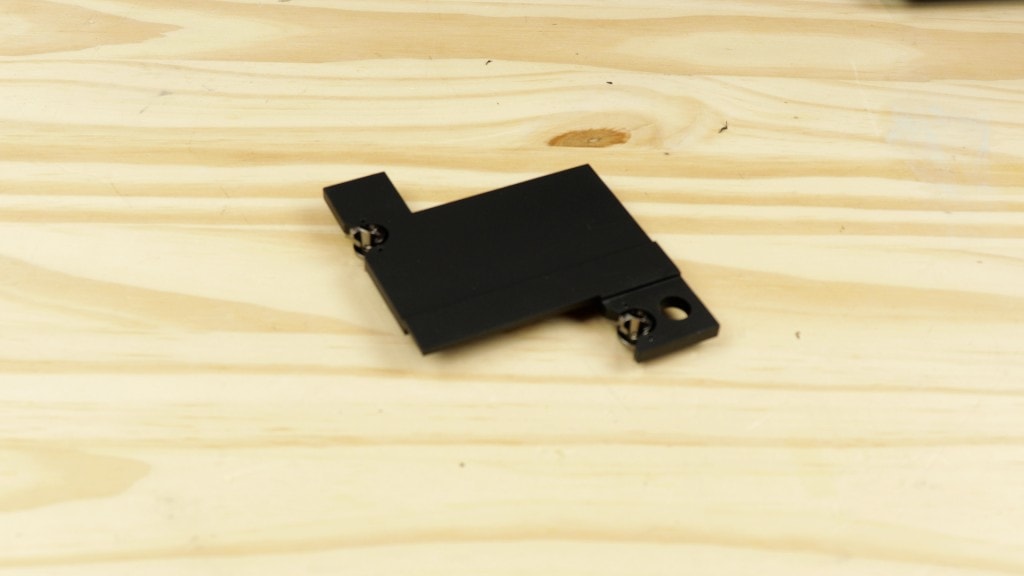
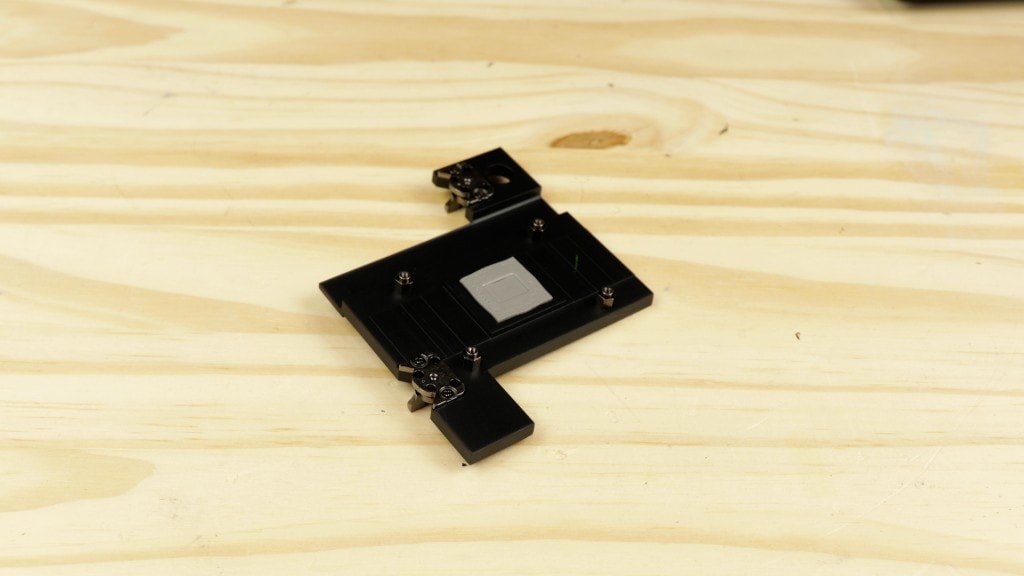
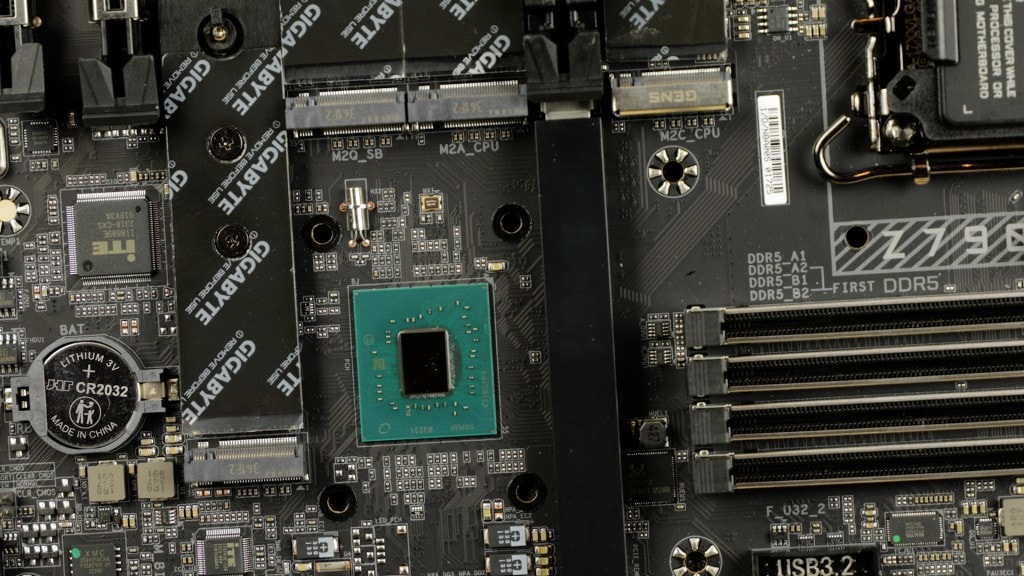
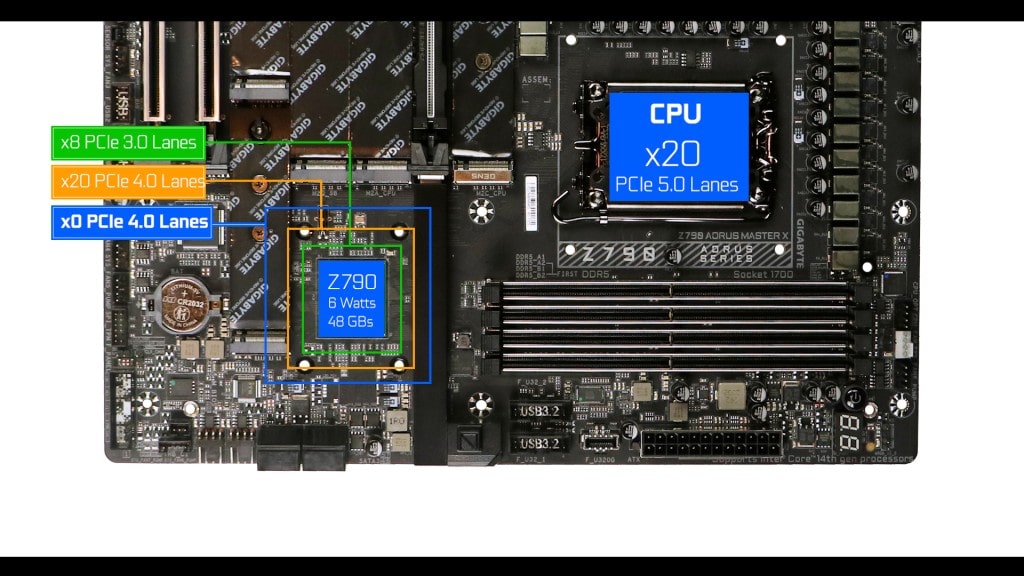
Other than that, we are dealing with a very similar bandwidth menu than seen on its Z690 predecessor. Most of the novelty this year, coming from the 13th and 14th Gen intel CPUs which does provide the only PCie 5.0 lanes you’ll ever see available on a Z790 powered motherboard.
SATA 3.0
For a more classical storage solutions, we have our usual SATA 3.0 plugs. 4 in total, with a transfer rate of 6 Gbps each. They can be configured to run into a 0,1, 5 or 10 RAID configuration.
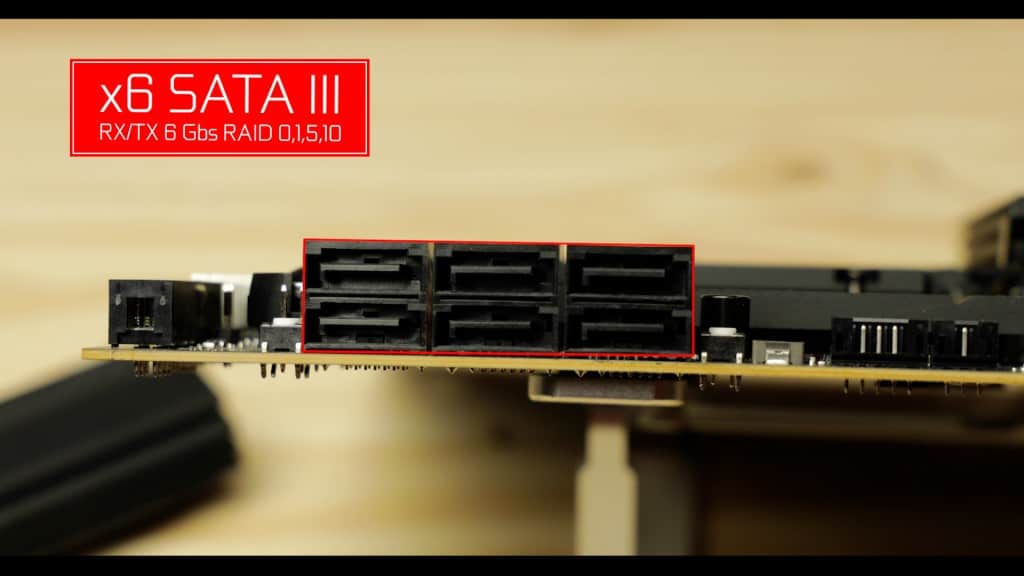
PCIe Slots
We have 3 x16 slots with different speeds.
Only the CPU linked one gets the future proofing PCIe 5.0 treatments on every single of its 16 lanes, allowing a 64 GBs bandwidth in both directions. This is obviously where you’d want your GPU placed for optimal performances hence the metallic re-enforcements.
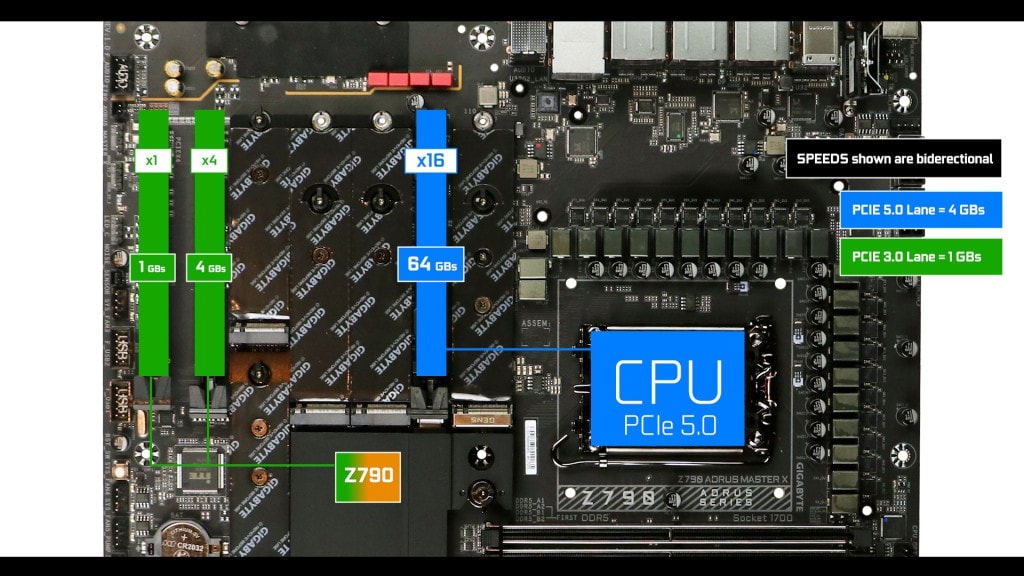
The 2 remaining PCIe exports are a bit deceptive. They both at 16 slots, and metallic re-enforced which suggest a multiple GPU support which would go hand in hand with both the MASTER Pricing and its long history of DUAL GPU support. Unfortunately nothing could be further away from the truth.
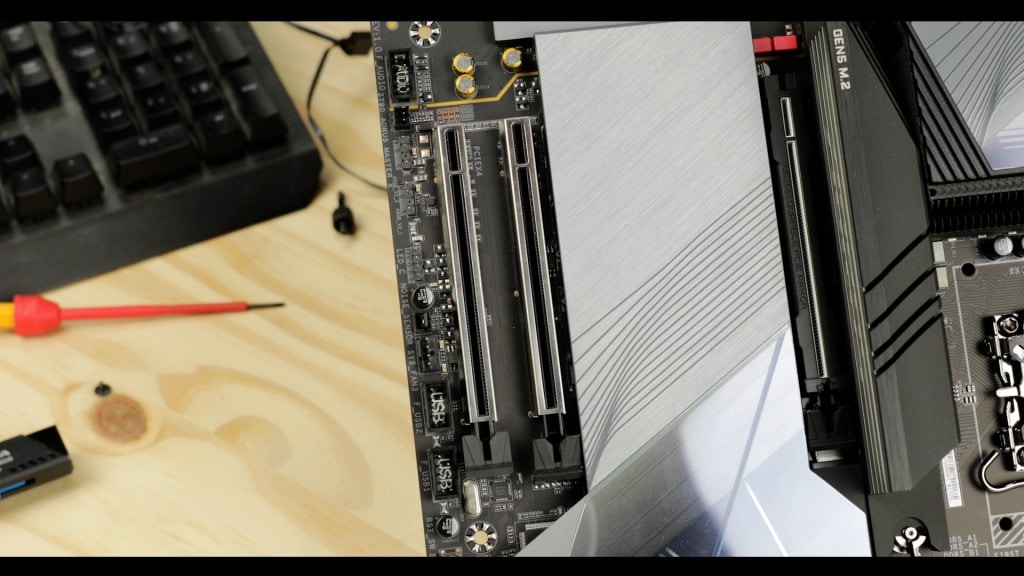
The metallic reinforcements are strictly for show.
They are both running at the slow legacy PCIe 3.0 standard giving in best cases a cruelly slow 4GBs with of bandwidth. Absolutely inadequate for any respectable modern GPUs, for the ones you’d use with a a premium board anyways. Still Great for addons, such as capture card and even maybe an old M.2 SSD but that’s it.
Clearly GIGABYTE tried to advertise something they could not provide, and quiet disappointing so.
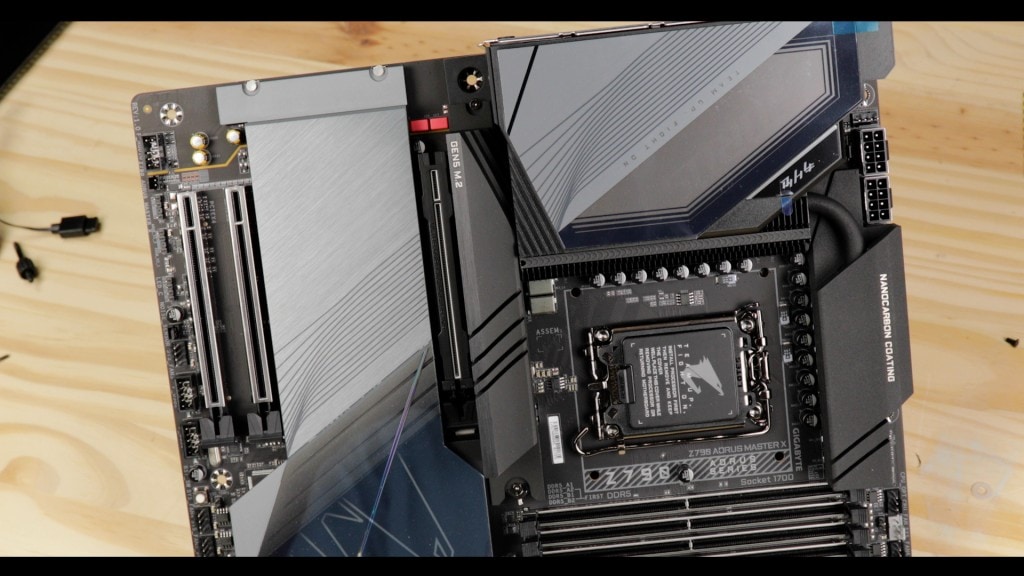
Not able to propose a dual GPU model here is problematic and does give quiet a big advantage to its natural competition which does, and might reduce the professional / production appeal of a rather very expensive single GPU, very gaming focused product.
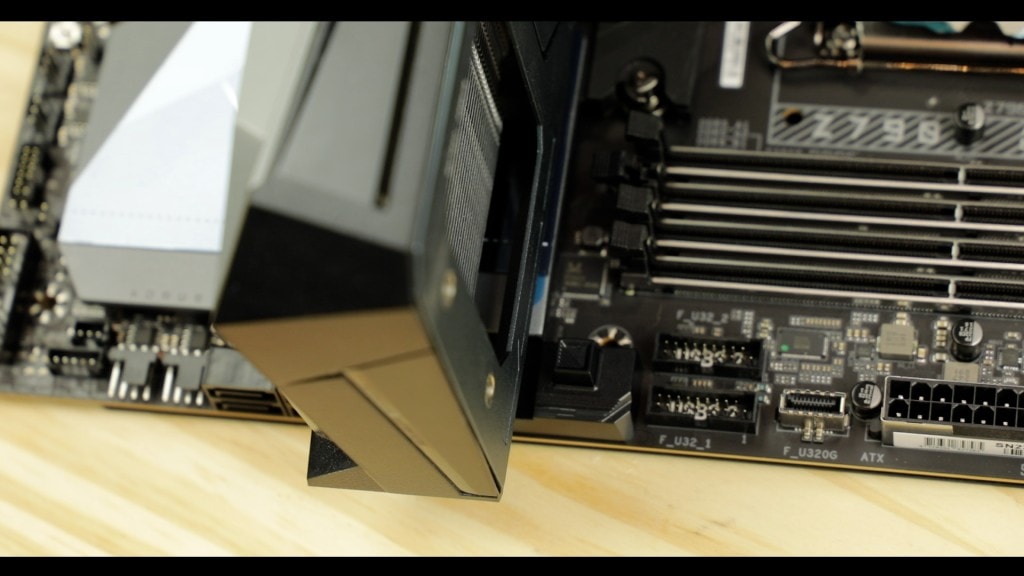
On the good side of things, we do have a GPU eject button, which will ease greatly your GPU adventures.
Overall, I am disappointed to see this brand using these kind of cheap tactics, and performance wise, we are finding ourselves with the expansion abilities of Z790 entry level. Nothing more.
Back IO
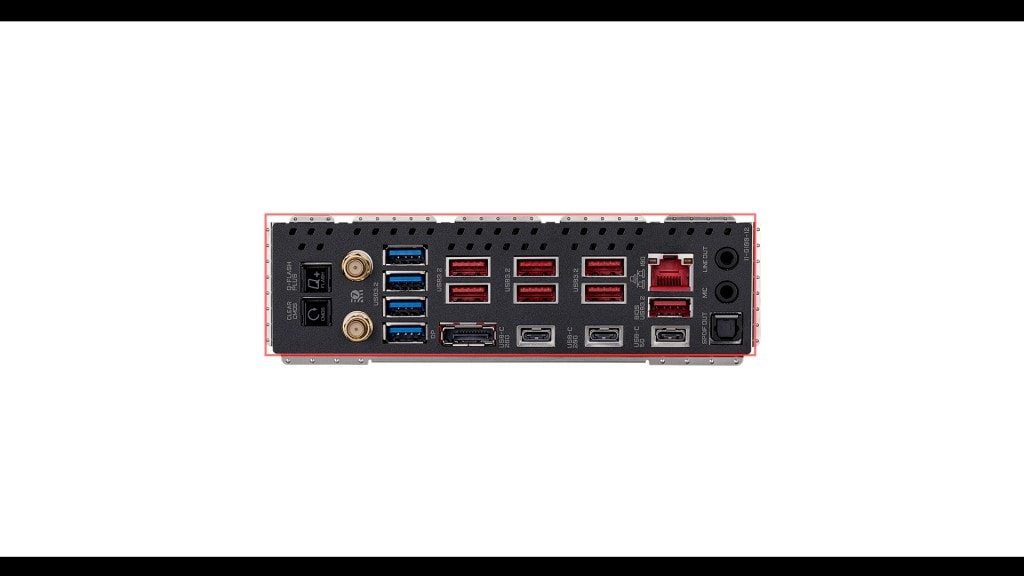
First let me note the integrated and padded back IO which has been punctured and now serves as an Exhaust for the VRM!
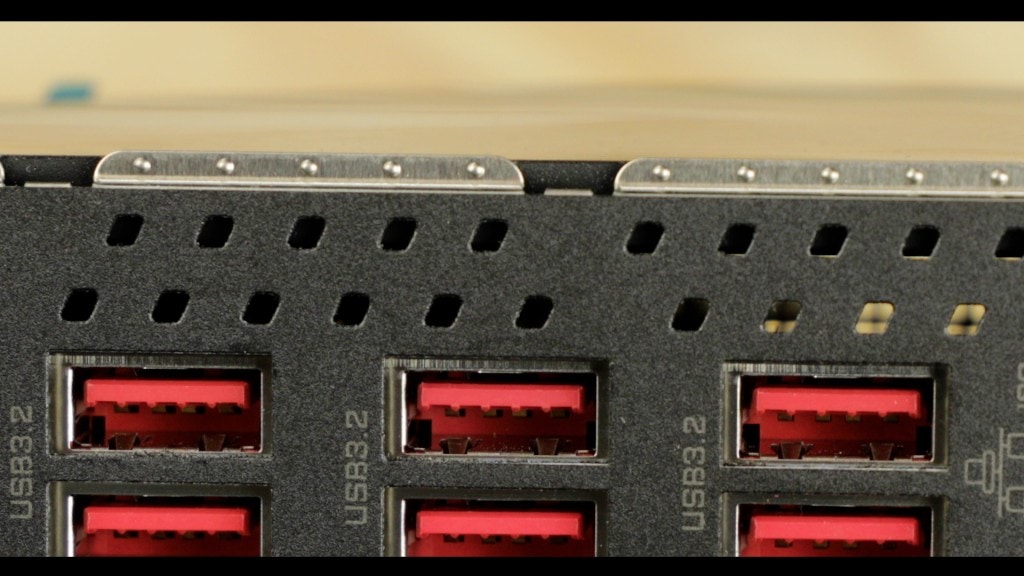
Another little innovation when compared to its Z790 MASTER twin, and a Nice imaginative thermal improvement! Does it really make a whole lot of difference? Not sure, but I do like the effort!
- Our accessible troubleshooting features, clear CMOS and BIOS button for a CPU-less BIOS UPDATE
- x4 USB 2.0 Gen (480 Mbs)
- x3 USB 3.1 Gen (5 Gbs)
- x5 USB 3.2 2nd Gen all able to transfer data upto 10 Gbs including 1 TYPE-C
- x1 USB 3.2 2nd Gen 2×2 able to transfer data upto 20 Gbs (TYPE-C)
- WiFi 7 (802.11Be / 320 MHz) with a subsistentially higher 48 Gbs transfer rate and a very low latency ( almost fiber grade)
- x1 DisplayPort 1.2 4096×2304@60 Hz HDCP 2.3
- x1 very premium, speed modulated 10 GbE LAN plug, which, on this aspect, firmly places the MASTER X above its natural competition (i.e.: ROG MAXIMUS Z790 DARK HERO / 2.5 Gbs)
- ALC 1220-VB from Realtek (ageing but still very premium), serviced by only 300 Microfarads of capacitors but most importantly, refined 4 film based WIMA capacitors, which will bring the audio solution to absolute excellence, both in play back and recording. By far one of the best integrated AUDIO solution you can hope for gamers and streamers alike!
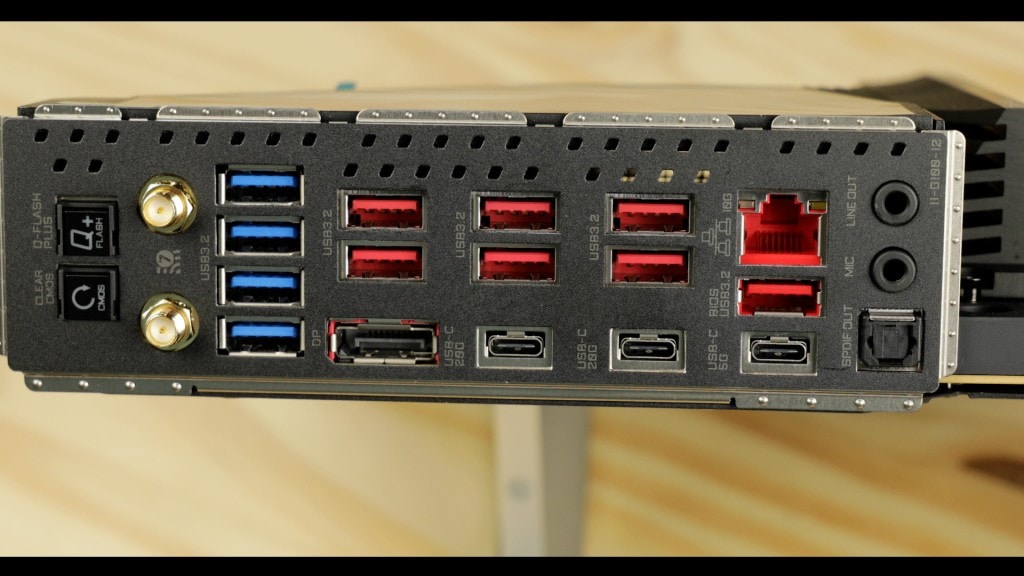
Overall, I do love the bandwidth abundance, the connectivity is simply the very best you could hope for, and we just witness an innovative move on the back io plate, something we never see!
Front Panel Connectors
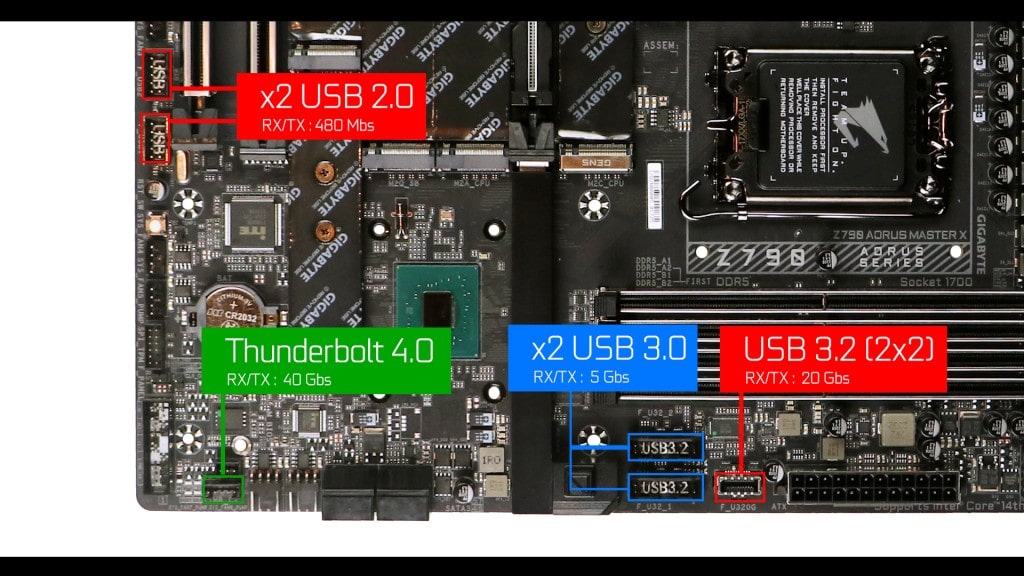
- x2 USB 2.0 (480 Mbs)
- x2 USB 3.0 (5 Gbs)
- x1 USB 3.2 2nd Gen 2×2 (20 Gbs) + fast charge upto 30 watts
- x1 Thunderbolt 4.0 card connector (40 Gbs)
Adequate.
Cooling connectorsCooling wise,
We have 9 fan connectors, 4 of which (!) are water pump compatible. I would be happy and glad to see such a generous water cooling support, but coming from a single GPU board, I find it a bit over the top, in addition we have no flow sensor, so if you are going toward the dual loop water cooling solution, it would be an imperfect one at best.
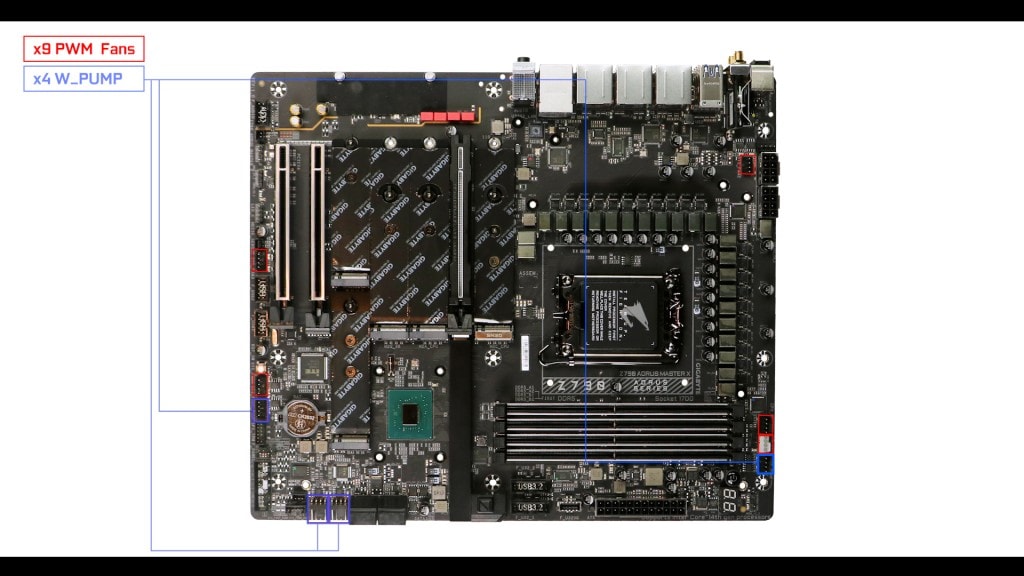
For some reasons gigabyte is departing the hybrid connectors realm they use to have which gave such versality to their boards and reverted back to a more classic individual use connectors. Something I regret and hope to see hybrid connectors back soon!
Finally troubleshooting wise, we do have everything a 500 bucks mobo entice, meaning:
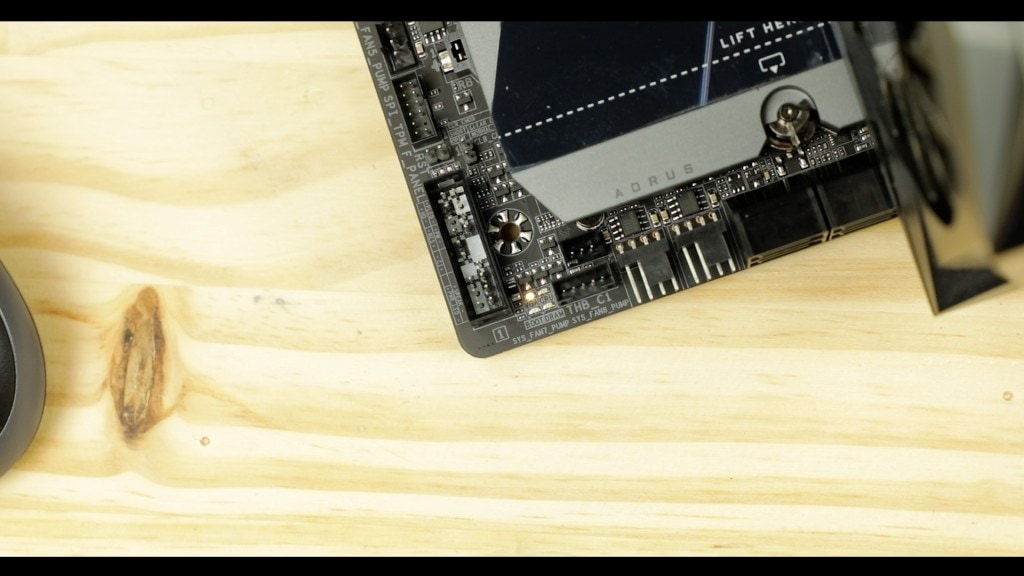
Our first aid EZ debugger for a lazy try to guide your troubleshooting issues in to the right direction,
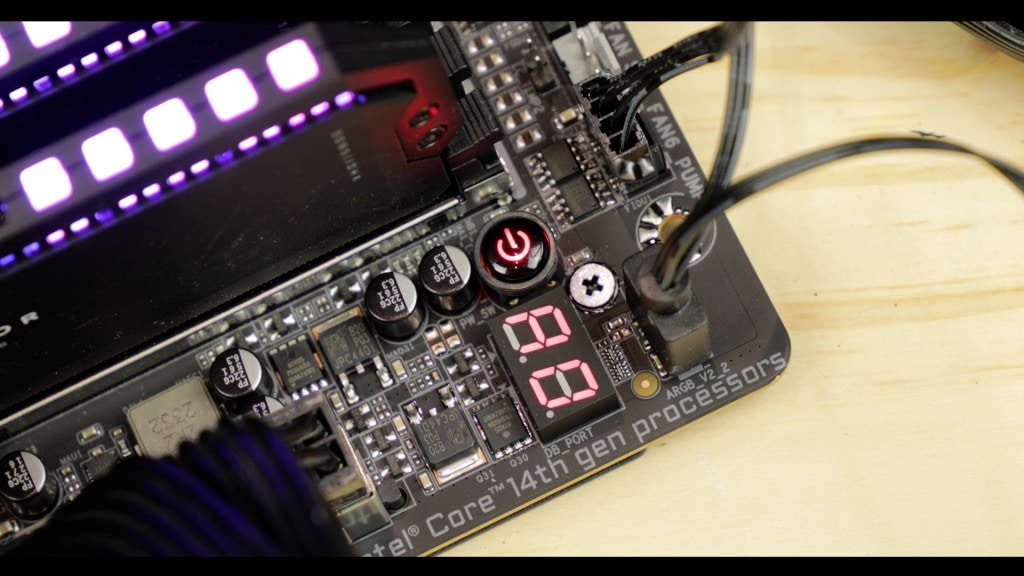
More importantly we do have an ERROR code screen which will refine that quest, to the very reason why, this thing refuses to pleasure your gaming needs 😉.
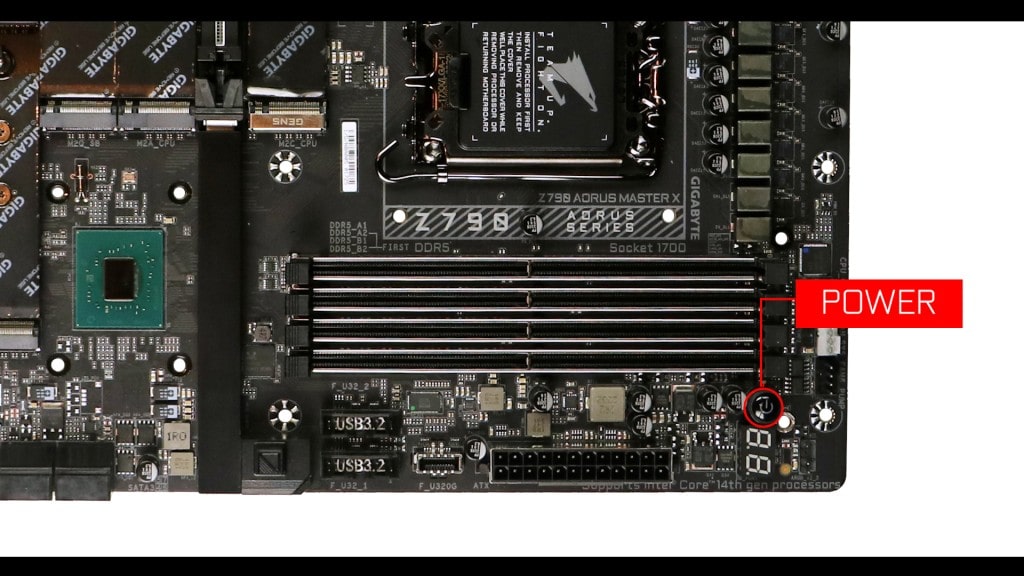
Other than that we got our nice power and reset soledered buttons as well as the already mentioned cleam cmos and flash back buttons.
RGB FUSION Sync Effect
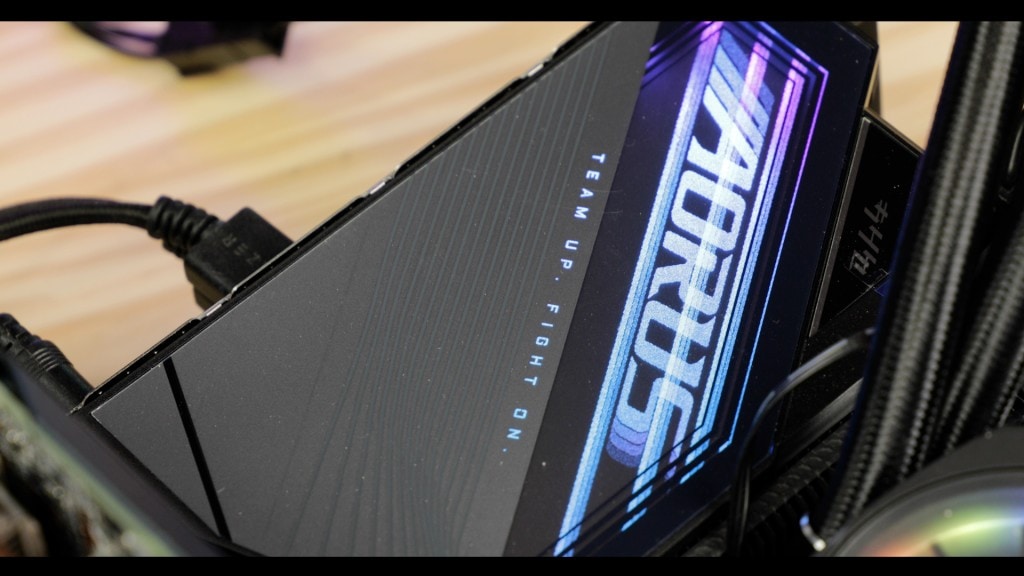
RGB wise, we do have a beautiful, precise, homogenously lid AORUS LOGO scene, which does re-inforce that premium feel.
And if that is not enough shine, we got our FUSION connectors for a maximal level of satisfaction.
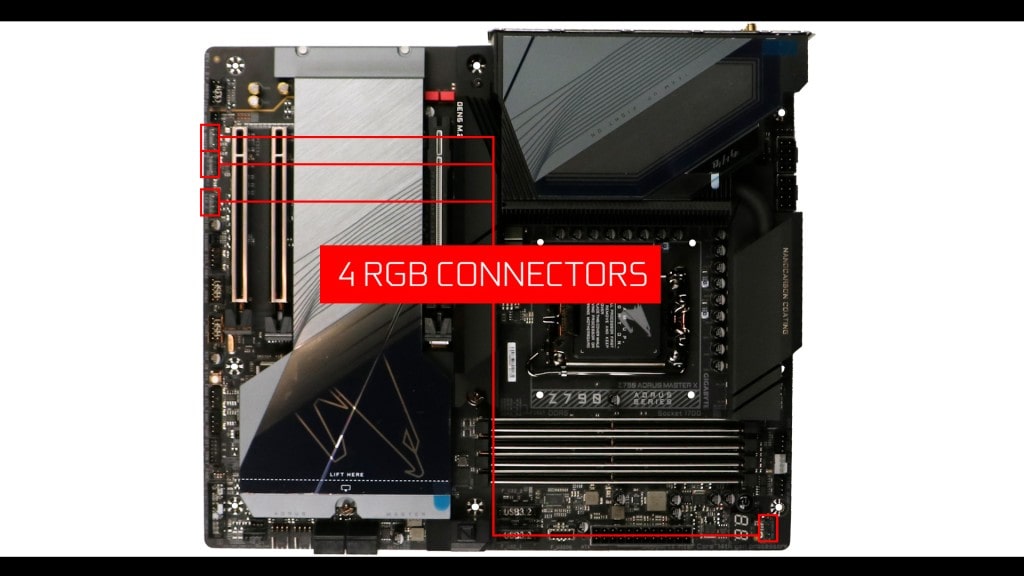
- x1 classic RGB Connectors
- x3 addressable RGB Connectors
All of the above are obviously fully customizable (and sync-able) through GIGABYTE very own FUSION software.
CONCLUSION
the Z790 AORUS MASTER X will cost you anywhere around 500 bucks before taxes which is a solid 100 premium over its VERY similar Z790 AORUS MASTER.
Is that price difference worth it. Short answer: NO!
The VRMs are near identical, the evolutions too gradual, and apart from the WiFi 7 upgrade, I could not see why on earth I’d spend a hundred bucks for what is sensibly the very same board we had availed to us a full year ago.
On its own merit and compared to the competition, is it a viable choice? NO as well!
Despite benefiting from an extremely robust, eye pleasing design, an overcharged and what might be one of the most powerful VRMs out there, it fails in a couple of key aspects.
It does not propose the dual GPU support the ROG MAXIMUS Z790 HERO purposes, and still tries to advertise it through the cunning presence of the metallic plate, something which disqualifies this board for many Pro focused clients,
And Even though I could not detect obvious heat bleeding, seeing power stages placed below a M.2 thermal floor really alarmed me, and I do regard this as a serious design flaw.
All things considered, unless you find this board below the 400 mark up, and truth be told am not certain this is where your money wants to spend its holiday season… sorry Gigabyte.

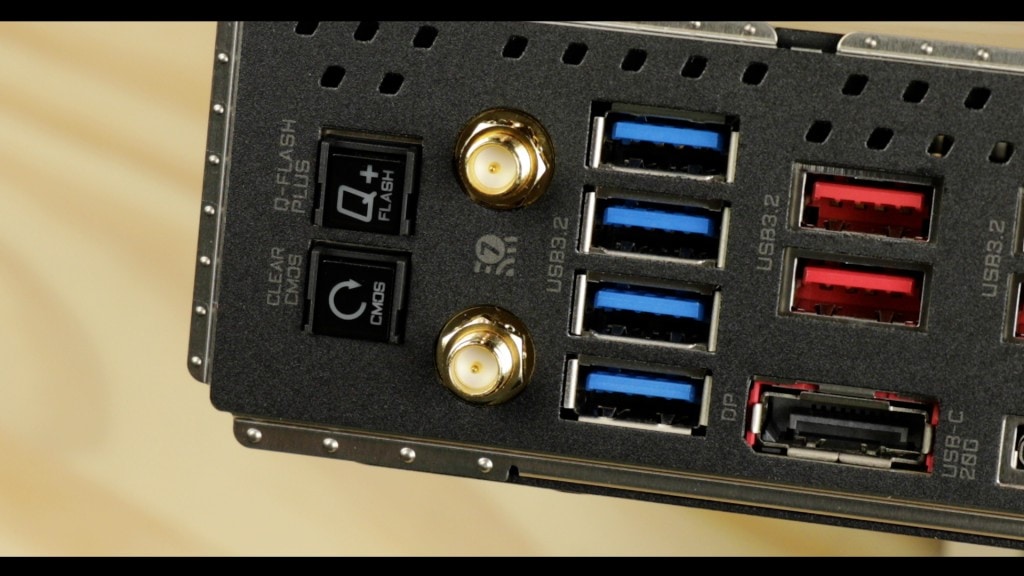 WiFi 7
WiFi 7 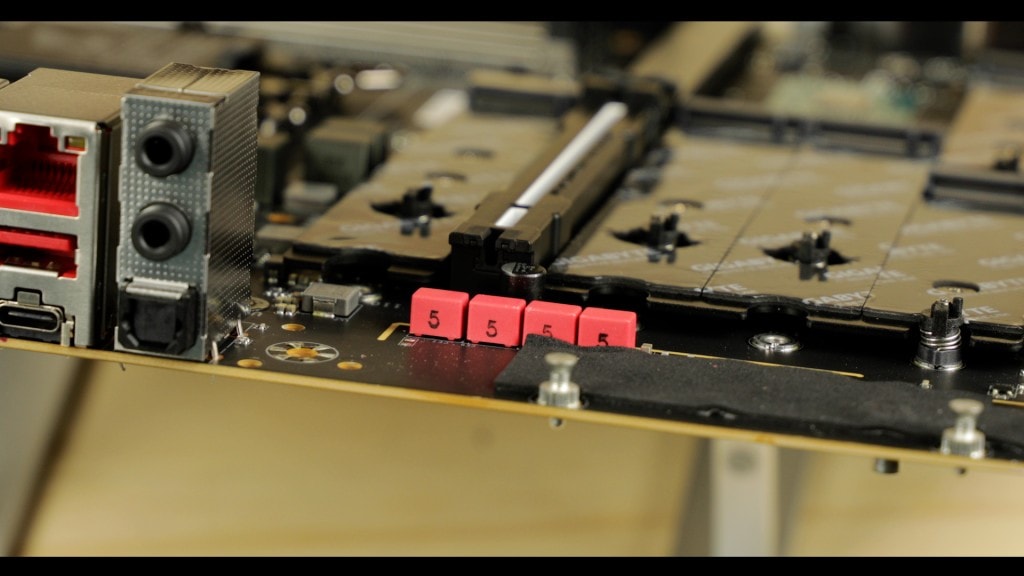
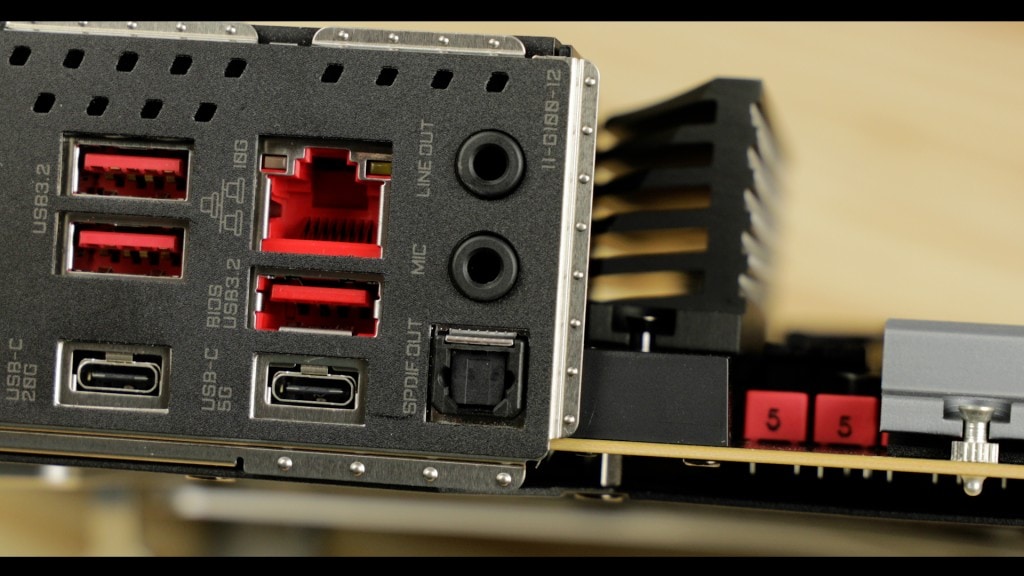
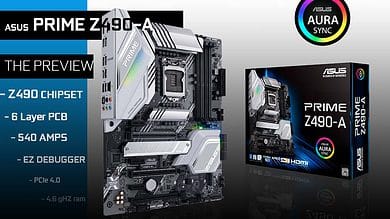
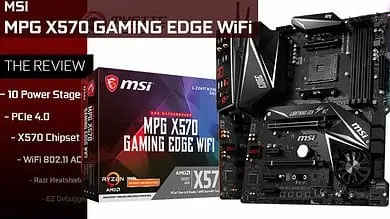
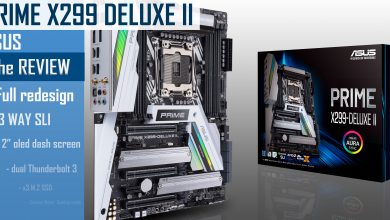
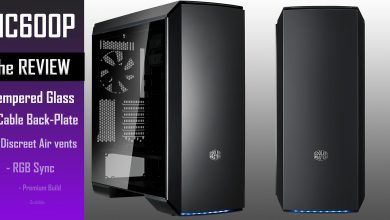
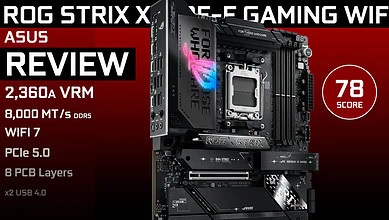
Interesting. I have a question, what about the people building a brand new machine? Looking around at most of the gear for a Gaming PC, even the lower end stuff is still expensive. I ordered parts for my build over Christmas and got some pretty good deals. When I was looking at MBs, I compared a bunch that cost anywhere from $200 – $1000. Just the fact there are Video Cards that cost $2000+ says how much money is being spent on building these machines. A lot of the focus of your review is based around $100 you may or may not save on your Mother Board, the primary component. It’s a very nitpicky standpoint. So, if the board cost $399 instead of $499, would your review be the same? I don’t understand how saving $100 on a primary component is a solid standpoint when you’re talking about a machine that’s going to cost thousands to build…Thought, lets say I spent $3000 for my build. Is the thought of spending $2900 really going to push me to buy an older model MB with older tech when you’re considering spending that much to build a machine? Really?? That 1 year difference can save you a year before you need/want to build the next one. I would argue if your nitpicking about spending and extra $100 then you shouldn’t be building a gaming PC at all. Go buy a used one from someone that wants to sell their one year old machine to build a new one on the latest tech.
I’m a Chief Technology Officer and have been working in Technology for over 30 years. Technology has a 6 month shelf life before it’s obsolete which turns into 12 months for the consumer…..Yes, it is true, just ask your cell phone. I did enjoy your thorough review of the board, but I just didn’t find any sound logic in your opinion that seemed to be all based around price. The PCIe 5.0 split with the Gen5 SSD from x16 to x8 was the same across ASUS and the rest. If you saw a board with PCIe 5.0 for x16 with the Gen5 SSD populated, send me the link, please. There were things I specifically required, so my choice was based around that. The need I had was specific and this board fit for my needs. They each had their high and low points. One had X and the other had Y. Not one of the MB’s from any manufacturer had “everything”. BTW, I thought the $500 price hike to the Xtreme X was pretty dumb. It looked prettier and the temp readout was cool, but for the price of an entire extra Master X?!
Anyway, I’ll start reading your reviews from now on. It’s pretty detailed, but not insanely so, which I like.
Thanks for the detail comment 🙂
The 13th and 14th gen intel core processors PCIe 5.0 limitation prevent any Z790 powered board to run, concurrently, both a full 16 lane PCIe 5.0 ran expansion slot AND a PCIe 5.0 m.2 SSD.
That is something AMD fixed by providing their X670E chipset with some additional PCIe 5.0 lanes.
I do foresee the maturation of the PCIe 5.0 lane technology in 2024/25 as its availability grows across the next gen chipset and CPU.